Responsible Tourism in Kumarakom, Kerala
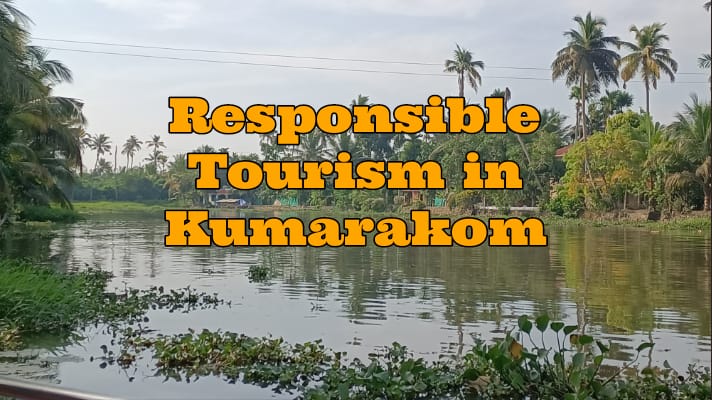
Last Updated on July 1, 2024 by admin
Community-based tourism, Kerala village life experience, or Responsible tourism in Kerala has been a buzzword for over a decade, attracting many tourists who want to experience the slow village life from a local’s perspective. Here’s what to expect from Responsible Tourism in Kumarakom.
Whenever Kerala is mentioned, one imagines tranquil waters lined with coconut trees and slow village life. Well, Kumarakom is exactly this! The small sleepy village of Kumarakom is nestled on the banks of the largest freshwater lake in Kerala ans is home to the backwaters, the Kumarakom Bird Sanctuary, agriculture, boating and fishing facilities. It only made sense to start Responsible Tourism in Kumarakom.
Table of Contents

Responsible tourism in Kumarakom: The beginning
Kumarakom was declared a Special Tourism Zone by the Government of Kerala in 2005. In May 2007, the first destination level meeting was held and the Destination Level Responsible Tourism Committee and three working groups on economic, environmental and social levels were formed. The official inauguration of Responsible Tourism in Kumarakom happened in March 2008 and it was the Kumarakom Gram Panchayat that initiated the implementation of Responsible Tourism at Kumarakom.
The advantage of experiencing village life with the locals is the economic, social and environmental sustainability with minimum negative impact. I experienced Community based tourism at Baradpani in Gujarat and I am so glad rural tourism is happening in other parts of India and here to stay!
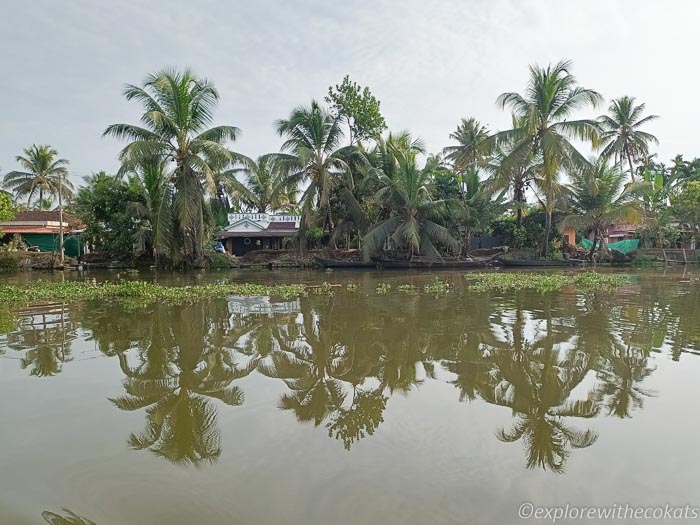
How to book a Responsible Tourism Tour in Kumarakom?
Tickets can be purchased from the Responsible Tourism Office Kumarakom near the Kavanatinkara jetty. However, due to less influx of tourists post covid, the office is closed. The tour can be arranged by placing a request on this email id: [email protected] / [email protected]
There are two packages to choose from while in Kumarakom so do not forget to mention which one you want to go for –
- A day with farmers
- Beyond the backwaters
Where does the tour begin and its duration?
The journey begins from the picturesque Kavanatinkara jetty. A Shikara boat transfers the visitors from the jetty into the narrow backwaters of Kumarakom. A local guide is allotted to each group who briefs the visitors about the Kumarakom backwaters, the landscape, the lush green surroundings, cuisine and wildlife.
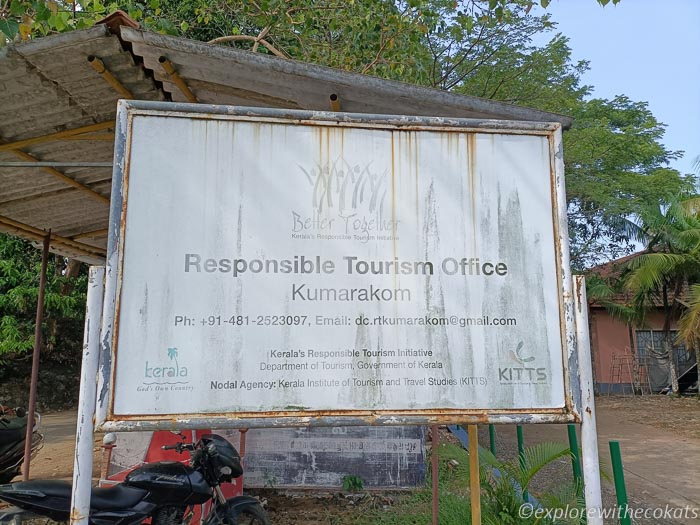
Activities under Responsible Tourism in Kumarakom
‘Welcome to Kumarakom’ said Sabu our Responsible Tourism in Kumarakom guide as we walked to our designated Shikara ride. It was interesting to see all the Shikara boats neatly parked on the backwater rocking against each other with the waves of the passerby boat’s motor. It took some direction giving and juggling to get the boat out in the main channel from its parking spot. Once out, we were on our way to the Kumarakom village.
Sabu told us all about the backwaters and how village life was normal in spite of the covid outbreak. We passed the typical village life – men cleaning their boats, women washing the utensils on the bank, ducks feeding in the water and the normal boat traffic along the channel. It certainly reminded me of my trip to Backwaters of Alleppey .
As the broad water channel narrowed a bit, we came across a small section where there was abundant lotus blooming. Sabu bent from the boat and caught hold of a pink lotus and said ‘Let me make a necklace for you’.
Surprised and curious about how a necklace would be made from a flower we held on tight to our phone video-graphing him while he went about making sections in the lotus stem giving it a beautiful pattern. He pulled out some what seemed like strings from the end of the lotus stem and knotted them together. And voila it really was a beautiful necklace.
As we pondered over his amazing necklace making technique, we reach our first activity place.
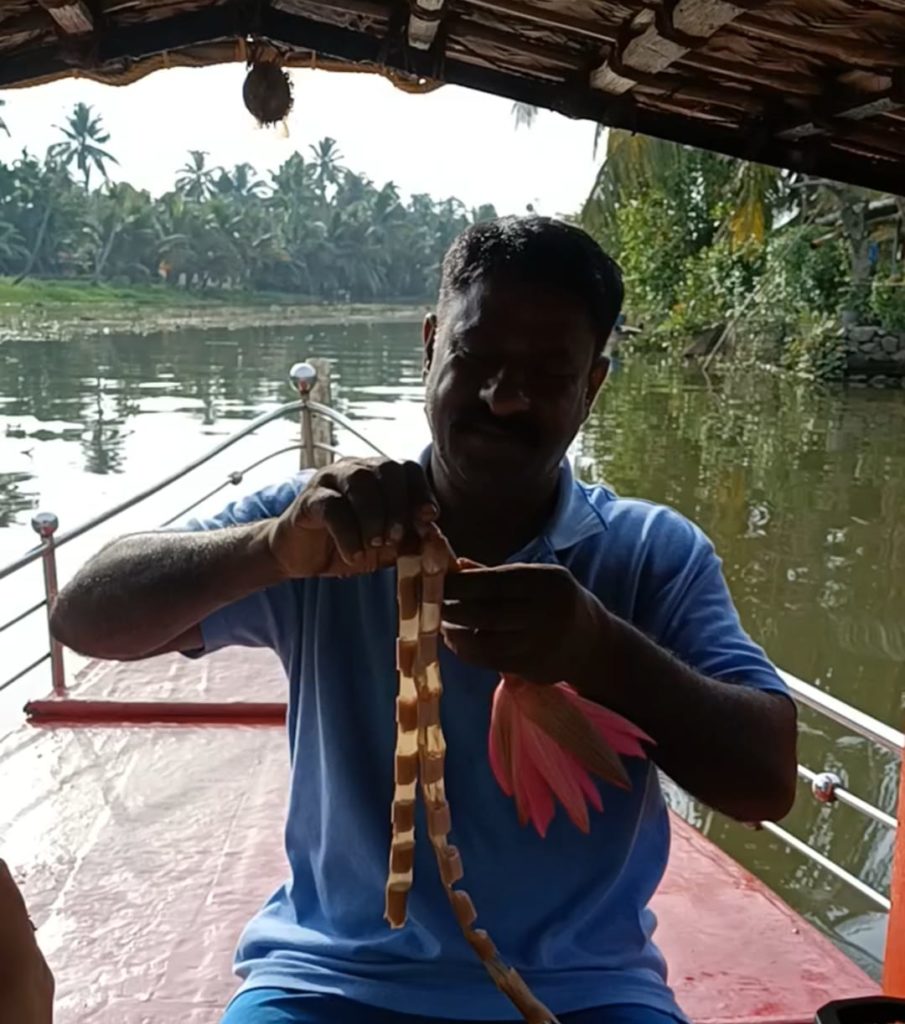
Coconut coir making
Coconut is such a versatile tree and Kerala knows how to best utilise it. From using its fruit for water, and coconut shell in making handicrafts, to using its stem for deriving an alcoholic drink, using its trunk as timber to make houses and boats, and its leaves in making thatched roofs and baskets.
We arrived at Ajitha’s house who demonstrated how she is utilizing the choirs in making ropes. Coconut coir is made using the coconut husk that is abundantly available here. While she had the raw material ready for us, she draped herself in a checkered skirt locally known as lungi and worn by men and made a kangaroo-like pouch where she kept the coir.
She then put the coir in a small motor run machine and the rope just started forming as she kept feeding more coir and playing a small tug of war with it.
In order to demonstrate how it was traditionally done, she placed herself on a mat on the ground and manually started rolling the coir until a rope was formed. That certainly took a lot of time and it made the hands rough due to the coconut fibres.
Some of my group members tried their hands on this and enjoyed themselves.
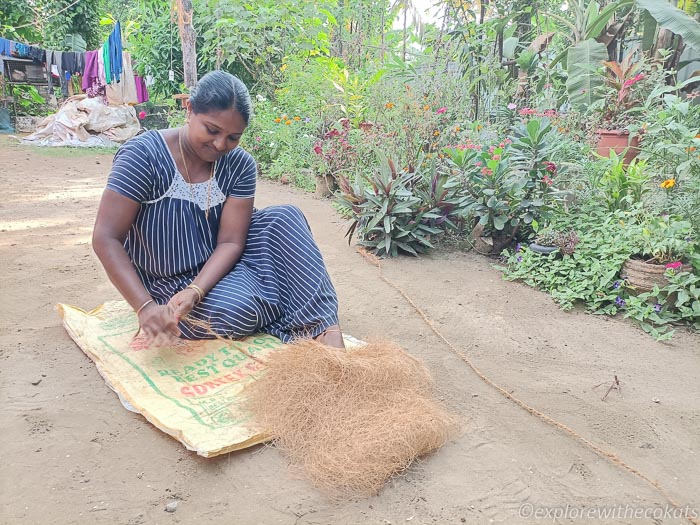
Natural shampoo making
The locals have been extremely self-sufficient and rely on garden supplies for everything. Be it fruits and vegetables from the kitchen garden to the fresh fish catch right outside the house, from herbal plants to cure diseases to plants that help in cleaning your hair.
Sabu walked to the fence of the house and plucked some leaves. He placed them in a bowl with some water and started gently crushing them. Soon enough, foam started forming! It was hibiscus leaves, a plant that readily grows across India. Forget about going to the market and buying chemical-laden shampoo in a plastic bottle!
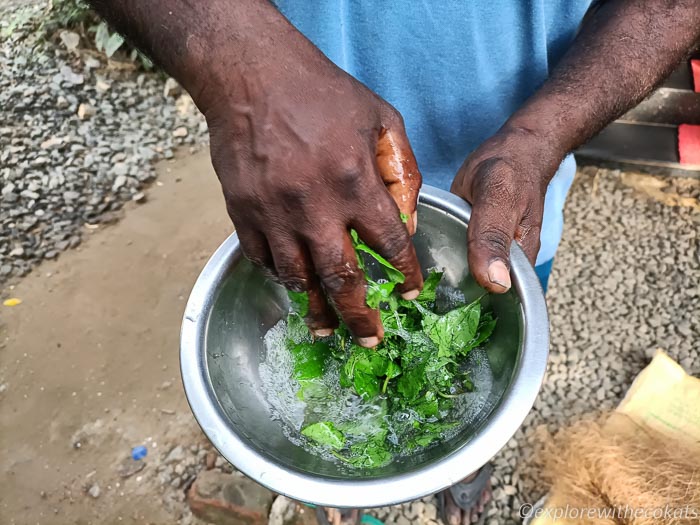
Coconut tree climbing
As we walked in Ajitha’s kitchen garden which was laden with fruit trees such as jackfruit, passionfruit, papaya, mango, banana and more, we reached some tall coconut trees.
Sabu explained how it was an arduous task to climb coconut trees in the olden times and it required skill and practice to climb them. However, with new technology, there is coconut tree climber equipment that makes the task easy, safe and quick. As Sabu demonstrated the new equipment he mentioned how women are also climbing these trees. Talk about women empowerment! 🙂
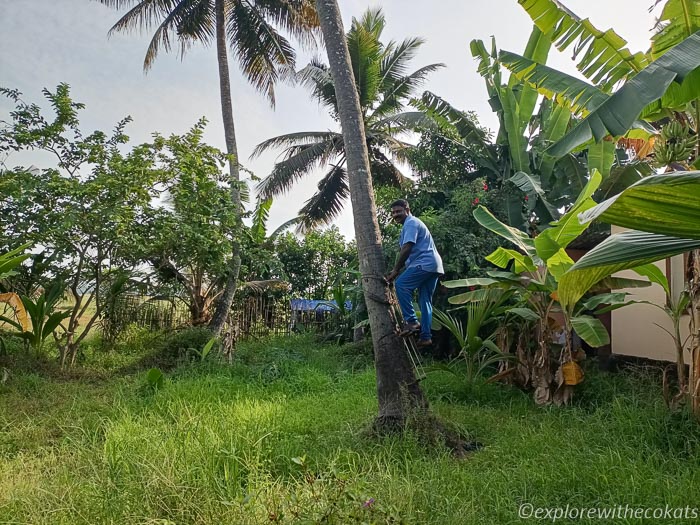
Fishing in Kumarakom
We came out of Ajitha’s house after tasking some delicious fruits from her kitchen garden, crossed the road and reached the water canal. Sabu came with a fish net to demonstrate how the local fishermen catch fish.
A big swing and the net went into the water. A few moments later it was pulled out and 2 small fishes were trying hard to breathe. They were safely returned back to the water.
Next, we walked to Sathi’s house to check out the weaving process.
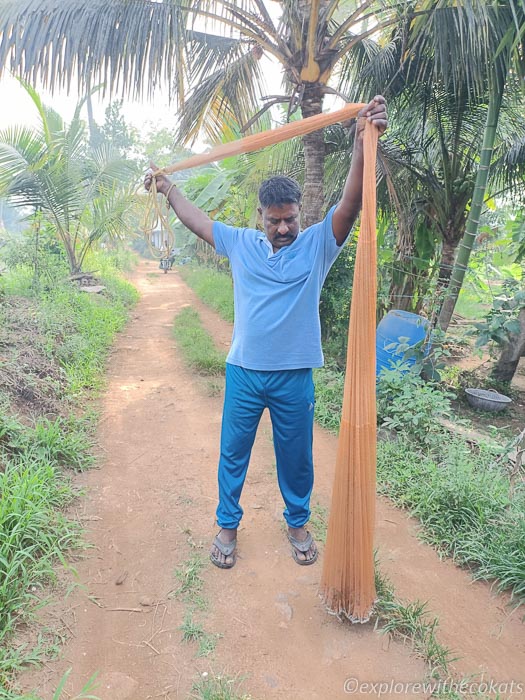
Weaving coconut leaves
As soon as Sathi saw us walking into the compound of her house, she placed a mat for herself, made herself comfortable and pulled some a dried coconut branch. She then carefully started braiding the leaves to form a pattern.
In yesteryears, before the advent of brick, mortar and cement, houses here were made with mud and thatched roof made of weaves of coconut leaves or palm leaves. This kept the house cool and due to the abundant availability in the garden, it could be easily changed when required.
The weaved leaves are now used in ornamenting cafes, or weaving baskets.
I tried my hand on this and kept forgetting the braids. But Sathi was patient enough and taught me well till I could weave without any mistake.
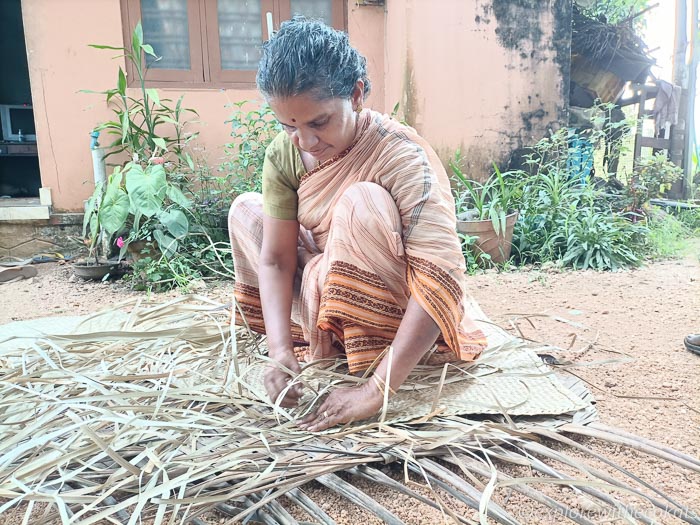
Toddy Tapping
As we walked to another house overlooking the paddy fields, a kingfisher’s call made the heads turn. Two men clad in lungi were busy in their conversation. One of them hung a terracotta pot around his waist and quickly climbed the adjacent coconut tree. This was a shorter tree than the one we previously saw at Ajitha’s house.
The process of making toddy, an alcoholic beverage, begins at the top of a coconut tree, where a toddy tapper climbs to gather the sap. A new unopened bud of coconut flower is cut with a knife leaving 95% on the tree. The whole bud is then beaten and pounded with a hammer, bud gets swollen. The cut bud is bound with a tender coconut leaf or a rope ahead of the cut part, and a paste of taali leaf or clay is applied to the cut portion. This keeps bacterial infection away and makes the bud ooze sap, not allowing it to go dry and heal. The clay helps in extracting more toddy and it smells and tastes different.
After beating the new flower bud for a week the flower begins to ooze sap which can be collected twice daily. The same steps are repeatedly daily– cutting, beating, taali leaf paste application.
We saw the toddy tapping in Kumarakom and the tapper collected fresh toddy which we tried. The fragrance was very strong and it felt like an alcoholic drink. But after tasting it, it wasn’t alcoholic and tasted interesting.
With this, 2 hours of Responsible Tourism in Kumarakom activity came to an end. We had to go back to our Shikara boat and back to the hotel.
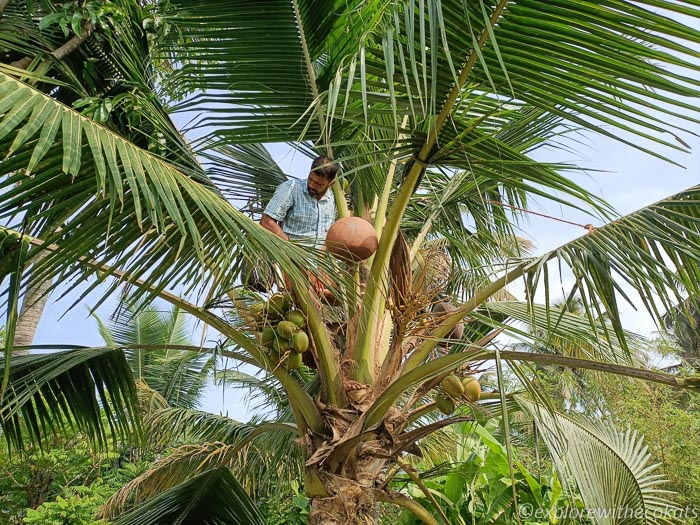
FAQs about Village Life Experience at Kumarakom
Is responsible tourism happening only in kumarakom, kerala.
Four destinations in Kerala – Kumarakom, Thekkady, Kovalam and Vythiri were the pilot destinations where Responsible Tourism in Kerala was experimented. It served as a model for the entire country and due to its success, three more destinations – Kumbalangi, Ambalavayal and Bekal were added.
How do the locals benefit from responsible tourism activities?
95% cost received from the ticket money is distributed among all the village stakeholders. This encourages the conservation of natural and cultural heritage and motivates the locals to continue their traditional practices.
Has Kumarakom won any awards for its responsible tourism initiative?
Yes, all the seven responsible tourism villages have won several awards including Kumarakom. Kumarakom Responsible Tourism Project has won UNWTO Ulysses Award for Innovation in Public Policy and Governance, PATA Gold and Grand and several other national awards.
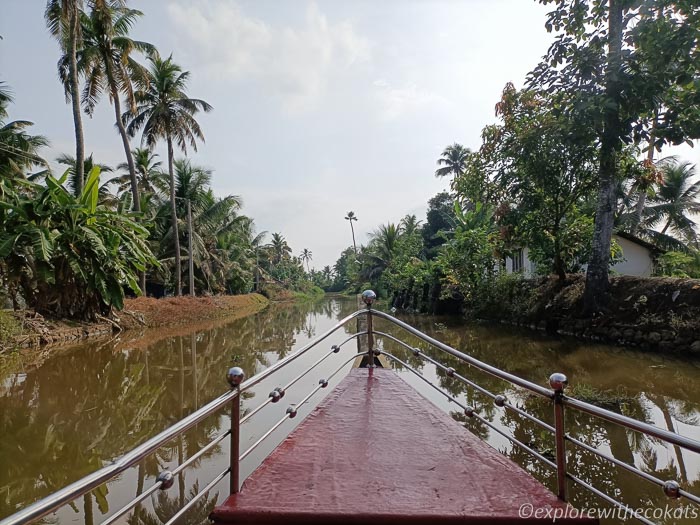
Read More Kerala Posts here
- Kerala Travel Guide
- Trekking in Munnar
- Things to do in Munnar
- Places to visit in Thekkady
- Human by Nature
- Places to visit in Cherai
- Glamping in Munnar, Kerala
- Things to do in Thiruvananthapuram
Disclosure: I was invited by Kerala Travel Mart (KTM) and Kerala Tourism to explore Kerala. However, all opinions in this post are unbiased and of my own.
Disclaimer – This post contains affiliate links. It means it adds no extra cost to you if you book through the link but I get a referral bonus which helps me earn a little to keep this website up and running.
Pin this post!
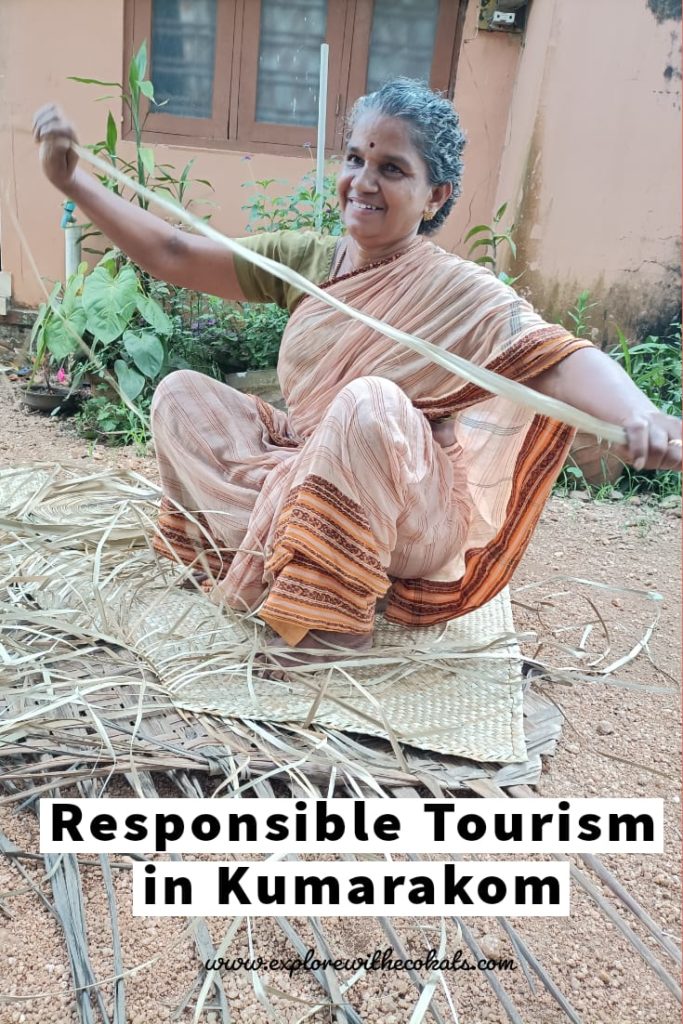
Ketki Gadre
Ketki is an environmental consultant and a sustainable travel blogger, who loves nature, wildlife and heritage. She enjoys bringing places to life through her informative blogs to inspire readers to travel sustainably and become responsible travellers.
Best things to do in Cherai & Places to visit near Cherai beach
Chendamangalam handloom, kerala, you may also like, chidambaram nataraja temple, tamil nadu: a guide, things to do in sigiriya | an ultimate..., 2 days in phnom penh, cambodia, places to visit in bhuj | a guide, how i volunteered for a waste pick-up trek..., lohagad fort trek: a day trip from pune, homestay in gir at gir vanraj farm –..., things to do in pondicherry beyond itinerary: the..., uzbekistan travel guide : everything you need to..., one day in bangkok: the perfect 24 hours..., leave a comment cancel reply.
Save my name, email, and website in this browser for the next time I comment.
Notify me of follow-up comments by email.
Notify me of new posts by email.
Responsible Tourism Kumarakom, Kerala & a Stay at Coconut Lagoon
I’d like to thank Coconut Lagoon for hosting my stay with them. As always, the stories, experiences and opinions expressed here are purely my own. This post may contain affiliate links. For more information on what type of organisations I collaborate with, please read my Editorial Policy .
Responsible Travel along the Kerala Backwaters
The Backwaters are perhaps Kerala’s best known tourist attraction, but on my first visit to Kerala in 2015, to go on an Ayurvedic retreat , I managed to miss them altogether. 2018 was time to remedy that and explore Kerala “properly” – Backwaters included.
The words “Kerala Backwaters” are likely to conjure up images of dreamy, tranquil floating with not much to do, or simply, messing about in boats in one of the most picturesque parts of Southern India. There’s a certain irony in their name though, for – far from being sleepy backwaters – parts of Kerala’s famed waterways have become touristed en-masse. To a certain extent this self-acclaimed “Venice of the East” is afflicted by many of the same tourism problems as its distant Italian cousin.
The good news , though, is that it is still possible to enjoy Kerala’s serenity without being packed in row-behind-row of houseboats. The even better news is that it is possible to enjoy Kerala’s Backwaters in a responsible way, while giving back to local communities too – as we found out during our recent visit to Kumarakom, and to Coconut Lagoon .
Responsible Tourism in Kumarakom, Kerala.
Having experienced the hustle and bustle of Alleppey, Kumarakom was a welcome retreat from the polluted canals / backwaters there and some of the tourist hustle. Located in central Kerala right on the backwaters, Kumarakom is sandwiched between Alleppey and Kottayam.
Ten years ago, Kumarakom was designated as a focus area for responsible tourism by the Kerala tourism board – meaning that the area had been identified as a tourism hotspot, where efforts towards more responsible tourism were needed and had the potential to achieve lasting results.
The responsible tourism policy now in place looks to provide more benefits to locals from tourism, and to address areas including pollution of the backwaters, displacement of local people due to tourism, conversion of agricultural land to resorts, denial of access for locals to the backwaters by resorts, procurement of local products through local (vs imported) suppliers, and addressing the imbalance of men vs women working in tourism. There’s even a series of “approved” souvenirs available in Kumarakom, where the revenue is guaranteed to go back to the local artisans who made them.
Ten years on, Kumarakom feels a world apart from some of the other backwater destinations in Kerala. There’s no party scene, and while some large houseboats float by, life here seems to be lived at a quieter, slower, and generally more local pace. Life on the water was as much made up of local canoes and fishing boats as of tourists like myself. For that reason, Kumarakom was my favourite stop on in the Kerala Backwaters.
Staying at Coconut Lagoon, Kerala.
On the shores of Lake Vemband, one of Kerala’s largest, sits the beautiful and luxurious heritage resort, Coconut Lagoon Kerala. I don’t think I’ve been anywhere more dreamy on my travels – the resort is a lagoon in the truest sense. Surrounded by water, the only way in or out, is by boat. Boarding from a private jetty, gliding through the canals in the afternoon sun and into Coconut Lagoon is an experience to remember.
The resort is a Heritage property – and winner of many awards – lovingly built from the remnants of traditional Keralan homes called tharavads, much of the resort is 150 years old. That shows through too, in Coconut Lagoon’s timeless charm and beauty. In a place where the main activity is quietly watching the passing boats (or going for a trip yourself) and watching the sun set behind the lake, it’s easy for hours to turn into days and days into weeks here.
The rooms are mostly individual villas (some even with private swimming pool), and all with beautiful outdoor bathrooms (perfect for showering surrounded by palm trees!) dotted around the green and fertile cove that Coconut Lagoon occupies. All have been lovingly built from dismantled traditional Keralan houses (that were relocated from disused properties in local villages) as a way to preserve a style of traditional architecture that is fast becoming extinct. It’s an example of up cycling on a grand scale.
Sustainability at Coconut Lagoon Kerala.
During my stay, my morning view consisted of serene backwaters, slowly passing boats, palm trees and hammocks swaying in the slight breeze, and the sight of Coconut Lagoon’s very own trade-mark “lawnmower”: that is, the rare breed Vechoor cows that Coconut Lagoon is rearing in its efforts to protect this breed and prevent it from dying out. Come morning, the cows are to be seen happily wandering (they are used to people and are docile) the small canals of the resort, munching their juicy green breakfast.
The resort feels like a small village in itself, and has gone to efforts to offer as much opportunity for locals to earn a livelihood from the resort as possible. If you can catch her, the resort has its very own tea lady who travels by boat around the grounds. Products are sourced locally wherever possible, and locals are given first refusal for employment opportunities.
When it comes to environmental impact, things are sometimes challenging in remote locations such as this. The water supply is not reliable enough to establish a water filtration plant for drinking water (although a solution is currently being looked into) which means plastic bottles are a necessary evil. Coconut Lagoon is making the best of a challenging situation, and is actively engaged in up cycling any plastic that is used on property: last year’s water bottles became this year’s Christmas decorations, and even building materials.
Wet waste is turned into biogas and vermicompost, and can ultimately be used as cooking fuel. Such measures add up to reduce the environmental impact of the resort as much as possible, while creating a positive impact on the local community, through jobs and economic integration.
Coconut Lagoon is part of CGH Earth group of hotels, who run luxurious, eco-friendly and responsible resorts throughout southern India. Book a stay at Coconut Lagoon or check rates here.
Soul Travel India
Passionate about all things India travel - journeys of transformation and discovery, local experiences, and getting under the skin of India.
Copyright Soul Travel India 2022, All rights reserved. This website uses compensated affiliate links.
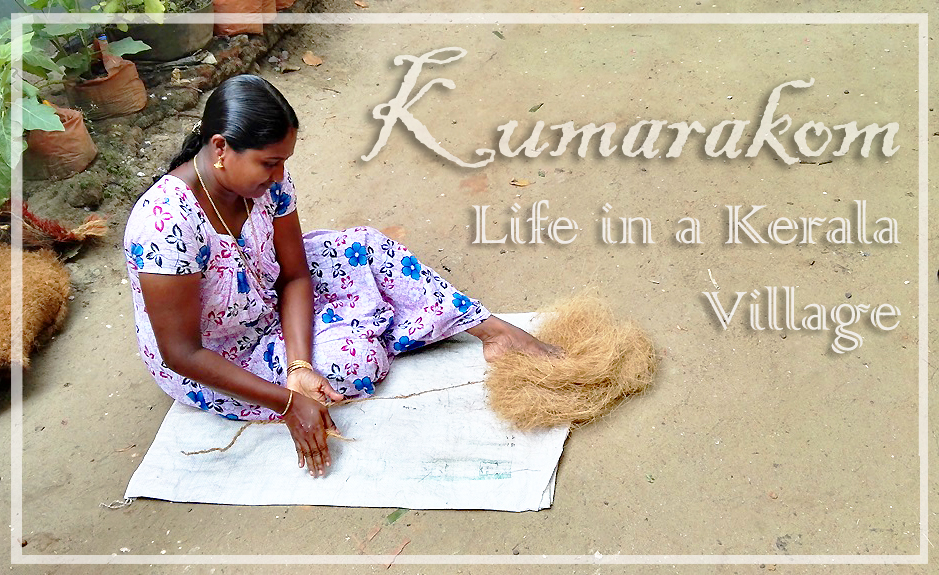
Kumarakom: Life in a Kerala Village
The kids were intently watching our group — mostly foreigners — wandering in one of the backyards in their village. One shyly peeked through the plants and smiled as I eyed her. This was one of the scenes when we went for a responsible tourism visit in a local community in Kumarakom. It is located at the southern part of Kerala, India and our destination during the Day 3 of our Kerala Blog Express Season 4 trip.
Found in Kumarakom is a portion of Vembanad Lake, as well as a network of canals, waterways and rivers. But the best way to explore it is to see how the locals live their daily life. This is Kerala’s sustainable tourism initiative, which has earned the UNWTO Ulysses Award for Innovation in Public Policy and Governance, the National Award for Best Rural Tourism Project, and other distinctions.
This responsible tourism program, one that is community-based and community-driven, allows visitors to witness and experience the various activities and cottage industries of the locals while channeling 90% of the travel package earnings to the local community.
What do you get to enjoy in this village? Here are a few things we had during our trip:
From the boat jetty near the Samrudhi Ethnic Restaurant, we boarded one of the water taxis that took us to the village. But not before we breathed in the beauty surrounding the backwaters, from water plants to coconut trees to the tranquility of the place. Upon reaching the Manjira village, we were welcomed by the villagers with flower garlands and beautiful smiles.

Climbing A Coconut Tree
Being hailed in one of the islands in tropical Philippines where coconuts abound, men climbing coconut trees is not an uncommon sight for me. But this visit showed me the faster and more mechanical way of going up and down a coconut tree in just a few seconds without having to carve portions of the trunk. The villagers here use a certain mechanism that can put Spiderman or Ironman to shame. Some of my fellow bloggers tried it, but I found that it takes some getting used to in order for one to do it in a snap.

Coir-Making
Coir rope, which is made of coconut husk fiber, is one of the materials that is used in the traditional houseboats or kettuvallam , the same kind we stayed for a night in Alappuzha (READ: Alappuzha: A Night In A Houseboat ). The villagers showed us how they make coir ropes, which are very strong and durable. They attach the fiber to a hook on a wheel which is rotated by electricity. When two strings are created, the same process is applied to twist them into a rope.

Shampoo-Making
The memory of my aunt showing me how to blow bubbles out of hibiscus leaves during my childhood seemed to have been buried deep down my brain. But it was refreshed when one of the villagers showed us how to make shampoo from this plant. He squeezed soaked hibiscus leaves and petals repeatedly and later on, the liquid became a bit sticky and a few bubbles started forming from the mixture. The natural shampoo is often referred to as thaali in Malayalam, the main language used in Kerala. Hibiscus plant, through its flowers and leaves, is also applied in ayurveda .

Coconut Delight
We walked through the rest of the village and made a stop at one of the houses where we had our fresh coconut water. Being in Kerala, the “land of coconuts”, it is a must to try this refreshing liquid, including its yummy meat. In fact, expect one in most of the destinations you will visit here.

Weaving Coconut Leaves
In that same house where we were enjoying our fresh drink, a lady was weaving coconut leaves. The woven sheets are often used as thatch roofs or walls while others are turned into baskets, mats, and other products.

Tapping Toddy
One of our guides brought us to a coconut tree where pots surround its bottom. He demonstrated how they tap toddy, a type of palm wine, and had us sample this local liquor. It was similar to what we call as tubâ in the Philippines. So when I took a sip, I instantly liked the taste (because I like tubâ ). It has a sweet tang because it was not yet fully fermented and still has a non-alcoholic quality. But once it does, it acquires a sour flavor. They also mix certain ingredients into the coconut sap, which is stored in a clay jar and covered.

Weaving Screw Pine
Leaner and finer than coconut leaves, the screw pine leaves are woven elaborately, which are then made into mats, baskets, bags and other crafts and products. With smaller strands, they are even more intricate to make. It was amazing how it was done just by watching the villagers demonstrate the process to us.

Farming and Fishing
Walking through paddy fields, passing by homes where they dry coconut meat for copra, watching fishermen put out their nets for a catch, and seeing cows tended in someone else’s background — it was a delight to experience their village life up close. Not that I am unfamiliar of rural living, but this is one kind of travelling, such as sustainable community-based tourism, that appeals to me.

This program enabled us to be with the locals, appreciate their way of life, and learn from them along the way. On their part, it empowers them when they take the initiative to play an active part in this responsible tourism program, acting as guides and activity leaders.
All these activities compose a half-day or full-day package called “Experience Kumarakom: A Day with Farmers”. Other packages are: half-day trip “Beyond the Backwaters” which will allow visitors to interact with teachers and students in a local Anganwadi, a center that implements the women and children development projects of the government; and the whole-day “Alongside Nature” option that includes a temple visit in Vaikom. Some optional packages are also available depending on the preference of travelers.

If you are interested to experience sustainable tourism and support the local community, you can get in touch with the following offices:
Responsible Tourism Travel Desk Kumarakom Phone: +91 481 2523097 E-mail: [email protected]
Nodal Agency for Responsible Tourism Kerala Kerala Institute of Tourism and Travel Studies (KITTS) Residency Compound, Thycaud P.O. Thiruvananthapuram Kerala, India Pin – 695 014 Phone: +91 471 2329468/ 2329539/ 2339178 Fax: +91 471 2323989 Email: [email protected] Website: http://www.rtkerala.com
Share this:
- Click to share on Facebook (Opens in new window)
- Click to share on Twitter (Opens in new window)
- Click to email a link to a friend (Opens in new window)
- Click to share on Telegram (Opens in new window)
- Click to share on WhatsApp (Opens in new window)
- Click to share on Pinterest (Opens in new window)
- Click to share on LinkedIn (Opens in new window)
- Click to share on Reddit (Opens in new window)
- Click to share on Tumblr (Opens in new window)
Great article Claire. It describes perfectly what we saw and experienced there. It was great spent afternoon!
Thanks Nastja! I’m glad to have shared the experience with you, guys. 🙂 Indeed, it was a fun and insightful trip.
Leave a Comment Cancel
Your email address will not be published. Required fields are marked *
Email Address:
Save my name, email, and website in this browser for the next time I comment.
Notify me of follow-up comments by email.
Notify me of new posts by email.
This site uses Akismet to reduce spam. Learn how your comment data is processed .
- Kochi to Kumarakom by Boat
- Coolest Place in Kerala During Summer
- Best Places to Visit in Kerala in Summer
- Summer Season in Kerala
- Kumarakom Museums
- Chennai to Kumarakom
- Kochi Weekend Getaway
- History of Kumarakom
- Places to visit in Kumarakom
- Water Sports in Kumarakom
- How to Reach Kumarakom from Bangalore
- Romantic Kerala: Best Honeymoon Places in Kerala
- Pathiramanal Island
- Vaikom Mahadeva Temple
Kumarakom Tourism Model: Sustainable Tourism in Kerala
- Kerala Ayurveda: An Immersive Wellness Journey
- Vallam Kali - Snake Boat Race in Kerala
- Onam: Harvest Festival of Kerala
- Exploring Monsoon Tourism in Kerala & Embrace the Enchantment
- Unveiling Kerala's Delights: A Memorable 5-Day Trip Itinerary
- 10 Interesting Facts about Kerala
- Why Kerala is Called God’s Own Country
- Kerala Cuisines: The Traditional Food of Kerala
- A Solo Trip to Kerala
- A Family Holiday in Kumarakom
- Malarikkal Sunset View Point and Water Lily
- Ettumanur Shri Mahadevar Temple
- Best Backwaters in Kerala
- Alleppey or Kumarakom
- Experience The Best Boat Ride in Kumarakom
- Aruvikkuzhi Waterfalls
- Jatayu Rock
- Kumarakom Bird Sanctuary
- Kumarakom Village Tour
- The Perfect Kumarakom Itinerary
- The Best Time to Visit Kumarakom
- How to Reach Kumarakom
- Team Outing in Kerala
Home > Rhythm Kumarakom > Blogs > Kumarakom Tourism Model: Sustainable Tourism in Kerala
A Product of Sustainable Tourism in Kerala
Empowering communities.

Cultural Exchange and Pride in Heritage
Preserving environment.
Recognition and Awards
Continue your booking.
- Sustainability
- Agriculture
- Brand Campaigns
- Watch inspiring videos
- Advertise With Us
- Press Coverage
Follow Us On
Download App
Need a Break? Kerala’s Tourism Revolution Will Make Your Holiday A Game-Changer!
Incorporating traditional jobs to fit in with the tour packages, forming local women’s groups, and introducing traditional cuisine from the backwaters to glocal tourists, Samrudhi is setting a rare benchmark for the tourism industry.

W ith a unique waterway system comprising freshwater lakes, small rivers, lagoons and canals that are interspersed with small islands surrounded by gangly groves of coconut trees and verdant mangrove forests, Kumarakom in Kerala ’s Kottayam district is a popular tourist destination.
Does the thought of harming the environment stop you from travelling? Check out eco-tours here.
In fact, this sleepy little backwater village is one of the destinations in the world listed by National Geographic magazine. This cluster of islands has the mighty Vembanad Lake in the backdrop. Recording an annual footfall of about seven million visitors, the kettuvallam (houseboat) rides are especially popular.
The traditional cuisine comprising seafood dishes like Chemmeen (prawns), Kakka (clams) and Karimeen (pearl spot), elicit a fan following of their own.
And then there’s the legendary Bird Sanctuary by the side of Vembanad Lake. A famous haunt of ornithologists and bird watchers from across the world, many migratory species like the Siberian Stork and the Wild Duck, along with more common species like darters, herons, egrets, waterfowls and cuckoos can be found here.
Against this picturesque backdrop, imagine a group of local women silently heralding the cause of Responsible Tourism through delicious meals since 2011.
Welcome to Samrudhi Ethnic Food Restaurant.

One of Kumarakom’s flagship initiatives under Kerala’s award-winning Responsible Tourism (RT) Mission, this humble joint has been offering tourists a taste of local cuisine while providing a steady source of income to the women carrying its reins.
Vijayamma Sarlappan, Samruddhi group’s president, shares how it all started. She begins, “With the boom in the tourism industry that was shortly followed by various Responsible Tourism initiatives, employment scope for home-bound women like us gradually began to take shape, and with that, the possibility of a steady income finally seemed a reality.”
She explains that each of the ten wards under the Kumarakom Panchayat selected a Kudumbasree unit member to put together Samrudhi’s workforce.
“As an initial investment for the restaurant, each of us pitched in Rs 10,000 from our savings, in addition to a loan of Rs 2 lakh that we received from Kudumbasree, plus Rs 1 lakh as a subsidy,” she adds.
Under the Café Kudumbasree initiative, they also received training in catering as well as clean and hygienic restaurant practices.
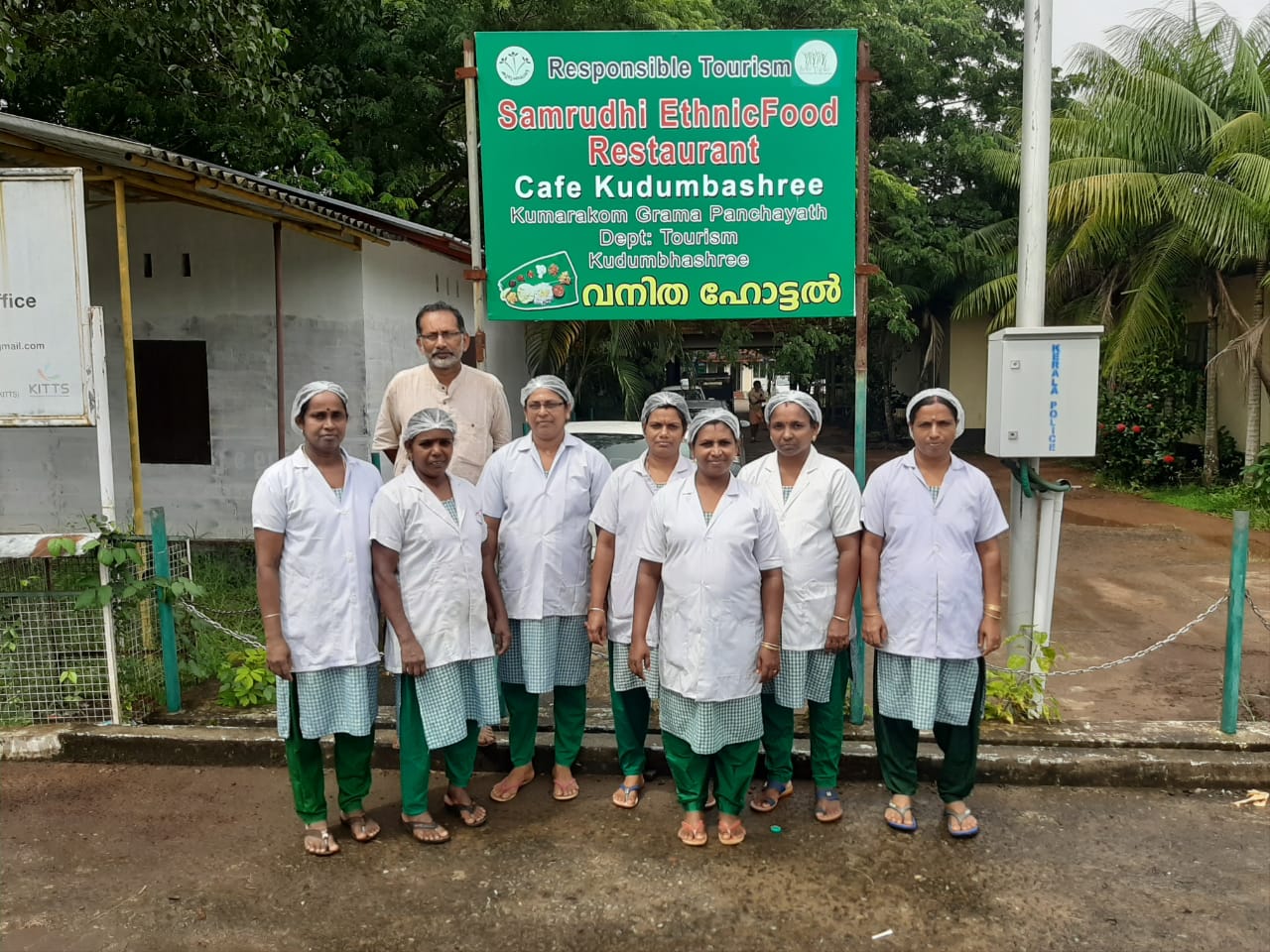
“We were even trained with tips and practices to keep in mind while serving food. Everything we prepare is strictly in line with the Green Protocol and does not contain any artificial food colours or chemical additives. We have been practising this in our kitchen religiously from day one,” shares Puthuparambil Raji, the restaurant secretary.
Samrudhi Ethnic Food Restaurant opened its doors to people for the first time on 11 April 2011.
Today, Samrudhi has become a recognised Kumarakom brand, catering for nearby events as well. “We have prepared food for about 200 people and are positive that we can undertake orders for larger groups in the future,” adds Raji.
Starting at 6.30 am, the restaurant operates till 8.30 pm, with the local backwater delicacies finding maximum takers. From vegetables to seafood, everything is sourced by the team from local farmers and fishermen.
Organic vegetables like pavakya (bitter gourd), payar (beans), padavalangya (snake gourd), cheera (red spinach), vazhachundu (banana flower), mathangya (pumpkin), ethakaya (raw plantain) and etha pazham (ripe plantain) as well as milk, pappadom (papad) and coconuts are purchased by the women from farmers and Kudumbasree members.
Part of the Kerala government’s ‘triple-bottom-line’ mission which comprises economic, social and environmental responsibilities, Samrudhi restaurant is one of the 14,000 registered units operating under the state’s pioneering Responsible Tourism Mission.
As of the achievements of this ambitious project, about 75,000 people from across the state have found jobs in the tourism sector, while 40 villages have become part of RT packages. The total revenue of Responsible Tourism activities in the state is around Rs 10 crore annually, and the total revenue from RT initiatives in Kumarakom is Rs 3.15 crore a year, says Rupesh Kumar K, Responsible Tourism Mission, Kerala.
As of the achievements of this ambitious project, about 75,000 people from across the state have found jobs in the tourism sector, while 40 villages have become part of RT packages. The mission has single-handedly contributed to the state tourism sector with an annual turnover of Rs 7.15 crore.
Livelihood opportunities that empower once-confined local women to interact with people from across the globe are the accomplishments closer home.
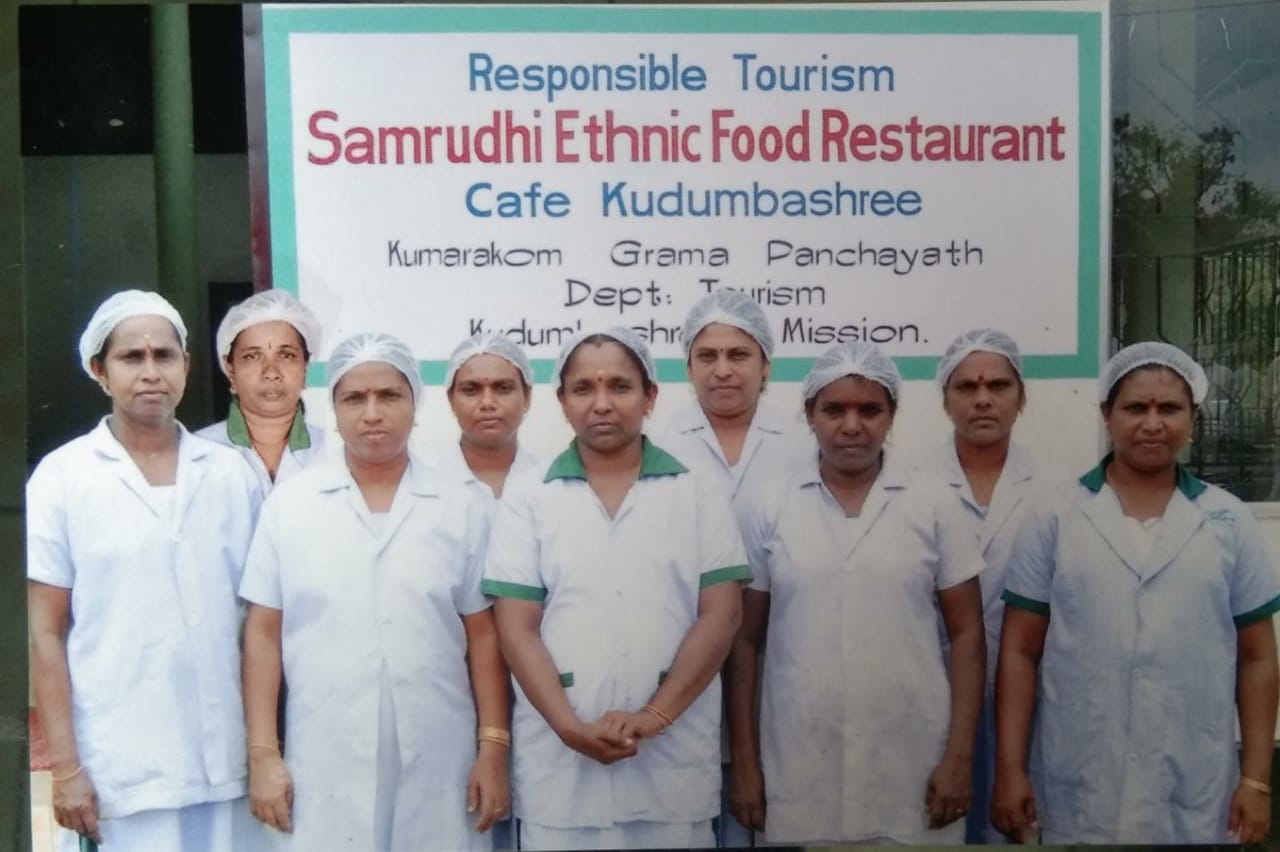
In fact, Harold Goodwin, a tourist from England, penned the following words in their visitors’ diary. “Delicious food that is prepared and served with love. Extremely amiable and well-behaved employees. Thank you, thank you so much for all your services.”
From incorporating traditional jobs to seamlessly fit in with the tour packages, forming local women’s groups and integrating these into the tourism sector to introducing traditional cuisine from the backwaters to glocal tourists, Samrudhi is setting a rare benchmark for the tourism industry.
“Earlier, as ordinary home-makers, our interactions rarely extended beyond the peripheries of our households, let alone the society. Now, we can go anywhere without any fear or inhibition, and can ably interact with the community. These are changes that have significantly impacted our lives. In addition to that, we have managed to provide a quality education to our children, get them married, and even repay debts and loans. Thanks to Samrudhi, we have become pillars of support for our families,” shares Sarlappan, proudly.
The women have taken their responsibilities a notch higher by making cloth and paper bags to eliminate plastic waste. Earlier this month, they received the prestigious gold award conferred by the Pacific Asia Travel Association (PATA).
This was one of the three awards conferred by PATA to Kerala Tourism for its women empowerment initiatives under the RT Mission. Samrudhi boasts of an annual turnover of Rs 15 lakh and plans on expanding to services like live kitchens, juice counters, and food festivals.
These successes, they attribute to the support and supervision of RT Mission’s state coordinator Roopesh Kumar and Kumarakom coordinator Bhagat Singh V S.
Remarkably, Samrudhi is not the only people-powered local initiative. Of the 15,500 RT units in the state, around 13,500 units are headed by women! Together, they reiterate how responsible tourism can uplift a region socially and economically.
Also Read: How Kudumbasree Women Changed Barren Land to Lush Farms, Earned 100% Profits!
As for the tourists, exposure to these places not only satisfies their wanderlust or gastronomic goals but also enriches their lived experience. So why not be part of an initiative that gives you so much and also allows you to give back to the place that made your trip worthwhile?
For more information on Samrudhi Ethnic Food Restaurant, reach out to Puthuparambil Raji at 9562750260.
(Edited by Shruti Singhal)
Like this story? Or have something to share? Write to us: [email protected] Connect with us on Facebook and Twitter .
Be a part of the better india community.
Please register to post your message
Check what other members are talking about -
Md Murshid My China name

@jahangir-alom
🎉 Big Sale Alert! 🎉 Get 60% OFF on Stunning Rajasthani Nose Pins at Zevarly! 💎
✨ Exquisite Designs: Handcrafted to perfection 💰 Massive Discount: Save 60% now 🛒 Limited Stock: Grab yours before it’s gone!
👉 Shop Now: https://zevarly.com/collections/buy-now-rajasthani-nose-ring
📦 Free Shipping on all orders ⚡ Hurry! Offer Ends Soon!
Discover timeless elegance today at Zevarly! 🛍️
Sounds Interesting? Share it now!
Top Hotel Collections

Resorts With Private Pool
House Boats
Kumarakom Travel Packages
Compare quotes from upto 3 travel agents for free
Kumarakom Houseboat Stay Tour Package
Kerala tour package 7 nights 8 days- kochi, munnar, kumarakom and more, shimmering munnar, kochi & kumarakom package - houseboat stay, best 4 days trip in india: houseboat stay, spectacular kumarakom, thekkady, kochi and more, blissful kerala package with munnar, kumarakom & kochi, kumarakom travel essentials.
Ideal duration: 1-2 days
Best Time: October - February Read More
Planning a Trip? Ask Your Question
"Backwaters bay, small islands - Little Venice"
Kumarakom tourism.
With emerald green waters flanked by lush vegetation, Kumarakom is an enchanting backwater destination situated 16km away from Kottayam in Kerala. Lying on the banks of Vembanad Lake , Kerala's largest lake, Kumarakom is a cluster of small human-made islands reclaimed from the lake. This picturesque village beckons travelers with its serene waterways, verdant landscapes, and rich biodiversity, making it a quintessential destination for those seeking a peaceful retreat.
Known for paddy fields, fishing, beach , a network of backwaters , delicious local cuisine, traditional Kettuvalloms (rice barges) houseboats and luxury and budget resorts, this picturesque village is a quintessential destination for those seeking a peaceful retreat. Embarking on a village life experience is a must-do activity, allowing guests to soak in the serene ambiance while traversing through lush greenery and quaint villages. The Kumarakom bird sanctuary here, which is spread across 14 acres, is a favourite haunt of migratory birds and an ornithologist's paradise. Additionally, cultural aficionados can explore the village's historic temples, museum , quaint churches , alluring waterfalls , and traditional Kerala homesteads, gaining insight into the local way of life. Take a two-hour canoeing trip during the sunrise or sunset to experience the beauty of this place. Kumarkom is the first destination to implement responsible tourism. Kumarakom's allure is particularly heightened during the winter and spring months, from November to March. As the weather turns pleasantly cool and dry, visitors are treated to idyllic conditions for outdoor exploration and relaxation. The lush landscapes come alive with vibrant hues, offering a captivating backdrop for leisurely strolls, cycling tours, and nature walks. Moreover, the region's cultural festivals and events during this time add to the festive atmosphere, providing visitors with an opportunity to immerse themselves in the local traditions and customs.
Places To Visit In Kumarakom

Kumarakom Bird Sanctuary

Kumarakom Backwaters

Thanneermukkom Bund

Village Life Experience

Kumarakom Beach

Pathiramanal
Top Hotels In Kumarakom
₽ 1,331 onwards
₽ 2,075 onwards
₽ 2,348 onwards
₽ 6,881 onwards
₽ 739 onwards
₽ 916 onwards
More on Kumarakom Travel
Backwaters of kumarakom, flora and fauna, history of kumarakom, restaurants and local food in kumarakom, suggested itinerary for kumarakom, best time to visit kumarakom, nearby places.

How to Reach Kumarakom
How to reach overview, how to reach kumarakom by flight, how to reach kumarakom by road, how to reach kumarakom by train, how to reach kumarakom by waterways, local transport in kumarakom, browse package collections, nearby destinations for packages, top listed packages.
Wonderful Kerala 6 Nights Honeymoon Package - Photoshoot in Munnar
Kumarakom Photos

+ 42 photos
How To Reach Kumarakom
Faqs on kumarakom, what are the places near kumarakom, what are the things to do in kumarakom, how much does a package cost for kumarakom, what is the best way to reach kumarakom, what is the local food in kumarakom, what is the best time to visit kumarakom, who should visit kumarakom, what is not so good about kumarakom, what is famous about kumarakom, have a question on kumarakom.

Popular Questions And Answers on Kumarakom
Q. What are the approx charges of the backwater houseboats in Kumarakom?
Naman Sarawagi
Q. How many days best to stay
Shashwat Kant
Q. If a couple have 5000 rs its enough for 1night to stay in boat house
Kumarakom Reviews
Edwin Stanley
Veena Mahesh
Karan Mehta
Similar Places

Get the best offers on Travel Packages
Compare package quotes from top travel agents
Compare upto 3 quotes for free
- India (+91)
*Final prices will be shared by our partner agents based on your requirements.
Log in to your account
Welcome to holidify.
Forget Password?
Share this page
We use cookies to ensure best experience for you
We use cookies and other tracking technologies to improve your browsing experience on our site, show personalize content and targeted ads, analyze site traffic, and understand where our audience is coming from. You can also read our privacy policy , We use cookies to ensure the best experience for you on our website.
- Leaders Speak
- Brand Solutions
- Kerala to transform Responsible Tourism into a people’s movement: PA Mohamed Riyas
- ETHospitalityWorld
- Published On Feb 27, 2023 at 11:00 AM IST

- Updated On Feb 27, 2023 at 11:00 AM IST
All Comments
By commenting, you agree to the Prohibited Content Policy
Find this Comment Offensive?
- Foul Language
- Inciting hatred against a certain community
- Out of Context / Spam
Join the community of 2M+ industry professionals
Subscribe to our newsletter to get latest insights & analysis., download ethospitalityworld app.
- Get Realtime updates
- Save your favourite articles
- pa mohamed riyas
- hospitality news
- responsible tourism
- kerala tourism

Village Life Experience at Kumarakom
A cozy stay at a high-end resort, a cruise in a luxury houseboat on Lake Vembanad, a visit to the famous bird sanctuary – if your tour package includes only this much, then you’re missing out on the essential Kumarakom; you haven’t got a taste of life in the village. The tour package ‘Village life experience at Kumarakom’ is a half-day tour package, to give the tourist an authentic experience. It is also a fine example of an itinerary linking the community-based tourism products and services, as envisaged by the Responsible Tourism programme. A lot of natives take active part in this package which costs Rs. 1400.
The Itinerary : Ride through the Canals
A glimpse of other village activities, visit to plantation, geographic and demographic details, some historic details, in and around kumarakom - some must-sees and must-dos, vembanadu - kol wetland region: a ramsar site, agricultural activities in kumarakom, shell mining in kumarakom, what to do at kumarakom, ayurveda at kumarakom, local administration in kumarakom, responsible tourism- an introduction, responsible tourism - kumarakom model, places worth visiting near kumarakom, some unsung heroes of kumarakom.
Topics: Kumarakom Responsible Tourism Village
- Classification Schemes
- Governmental Affairs
- Tourism Events
- Kerala at a Glance
- Travel Care
- Where to Stay
- Travel Tips
Specialities
- Kerala Food
Videos/Photos
- 360° Videos
- Royalty Free Photos


Share ×

Scan the QR code and open PeakVisor on your phone
❤ Wishlist ×
See all region register, peakvisor app, khanty-mansiysk autonomous okrug – ugra.
Welcome to the land of sheer silent whiteness. Its vast expanses are filled with fresh Arctic air, howling winds, and the spirit of true adventure. Come with us to the lands of the ancient Khanty and Mansi tribes that survived in this harsh climate of the Nether-Polar Urals . See the mountains that defy any logical or geological reason for their existence. Experience the wonders of this sparsely populated land where you can hardly see a human trace. Welcome to Yugra!
Flora & Fauna
Water resources, landmarks and tourism, major mountains, mount narodnaya, mount zaschita, mount neroyka, the pyramid mountain, samarovskaya mountain, ski and sports facilities, protected sites, reserves, national and natural parks, rivers and lakes, major cities, khanty-mansiysk.
The Khanty-Mansiysk Autonomous Area – Yugra (KhMAO) is located in the central part of the West Siberian Plain, stretching from west to east from the Ural Range to the Ob-Yenisei Watershed. The vast areas of this plain, as well as the Lower Priob region, are considered one of the most recently inhabited areas.
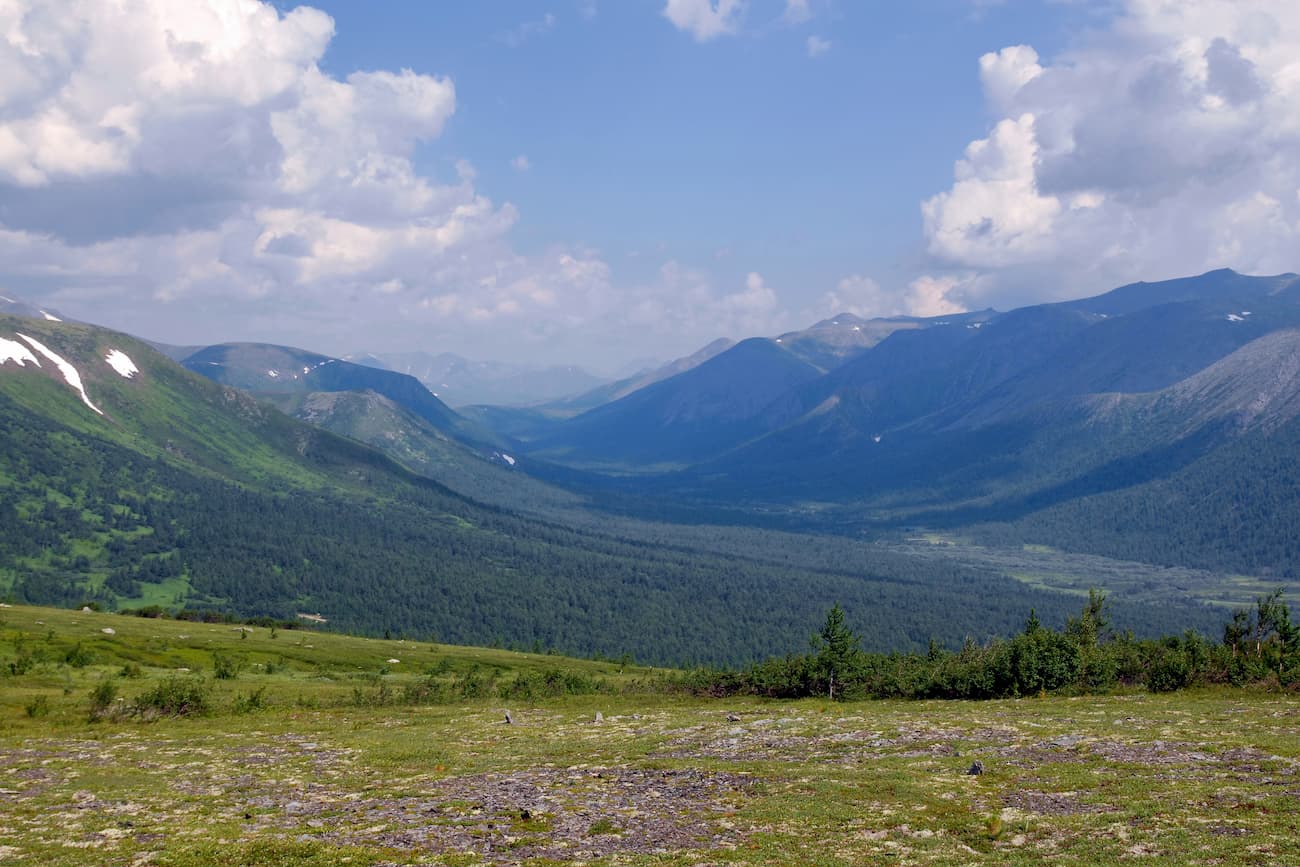
The Khanty-Mansiysk Autonomous Area (KhMAO) was established in 1930. Its name comes from two main northern indigenous peoples – the Khanty and the Mansi. From 1944 it was legally part of the Tyumen Region , but in 1993 the Area received autonomy and became a full-fledged territorial entity of the Russian Federation. It is a part of the Urals Federal District. The administrative centre is the city of Khanty-Mansiysk , whereas the largest city is Surgut. The word Yugra was introduced to the name of the Khanty-Mansiysk Autonomous Area in 2003 to pay tribute to the old name used by the locals to call the territories lying beyond the North Urals.
The KhMAO borders the Komi Republic in the north-west, the Yamalo-Nenets Autonomous District in the north, the Krasnoyarsk Area and the Tomsk Region in the east and south-east, the Tyumen Region in the south and the Sverdlovsk Region in the south-west.
The area of the territory is 534,801 sq.km, the length from north to south is 800 km, from west to east is 1400 km. The population of this huge territory is 1,674,676 people as of 2020, which is the same amount as people living in Barcelona or Munich.
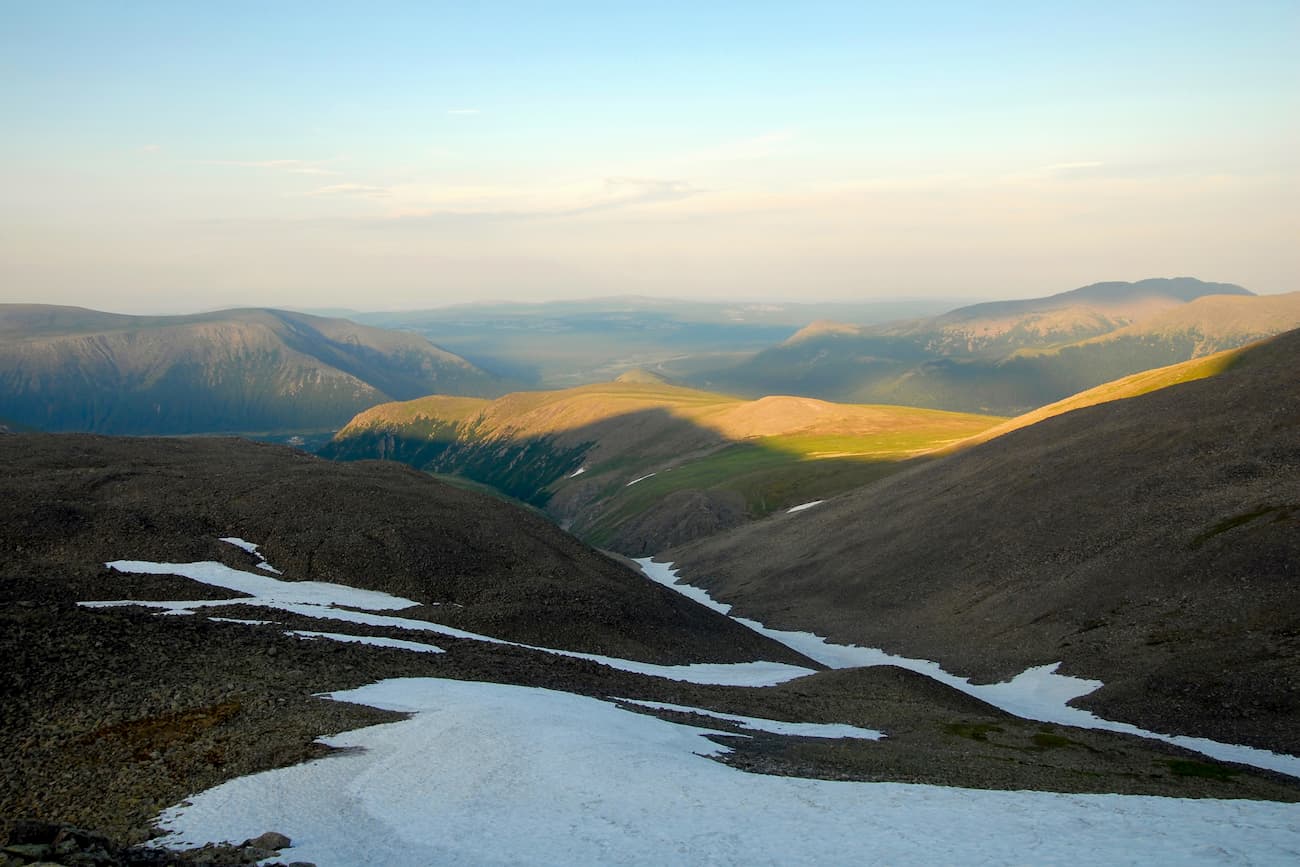
The main part of the territory is a huge, poorly dissected plain where absolute elevation marks rarely exceed 200 meters above sea level. The western part of the KhMAO territory is characterized by low and middle mountainous terrains with some Alpine relief featured in the Subpolar Urals. Here are ridges and spurs of the mountain system of the North Urals and the Subpolar Urals. The maximum absolute elevations are on the border with the Komi Republic . Mount Narodnaya (1,895m) is the highest peak.
More than 800 species of higher plants grow in the Khanty-Mansi Autonomous Area . Almost the entire territory is covered by taiga forests that occupy about 52% of the area. Spruce, fir, pine, cedar, larch, birch, alder grow here. In the northern parts of the area, the composition of the vegetation is greatly influenced by perennial permafrost. Light lichen grasslands which are used as deer pastures are widespread there. Tundra dominates in the mountainous and hilly areas. River floodplains and lowlands are characterized by meadow vegetation, the so-called water meadows. High floodplains of large rivers are mainly covered with woods that mainly feature willows, birches and aspens. Forests and swamps are rich in berries and various valuable plants, most of which are used in traditional indigenous medicine.
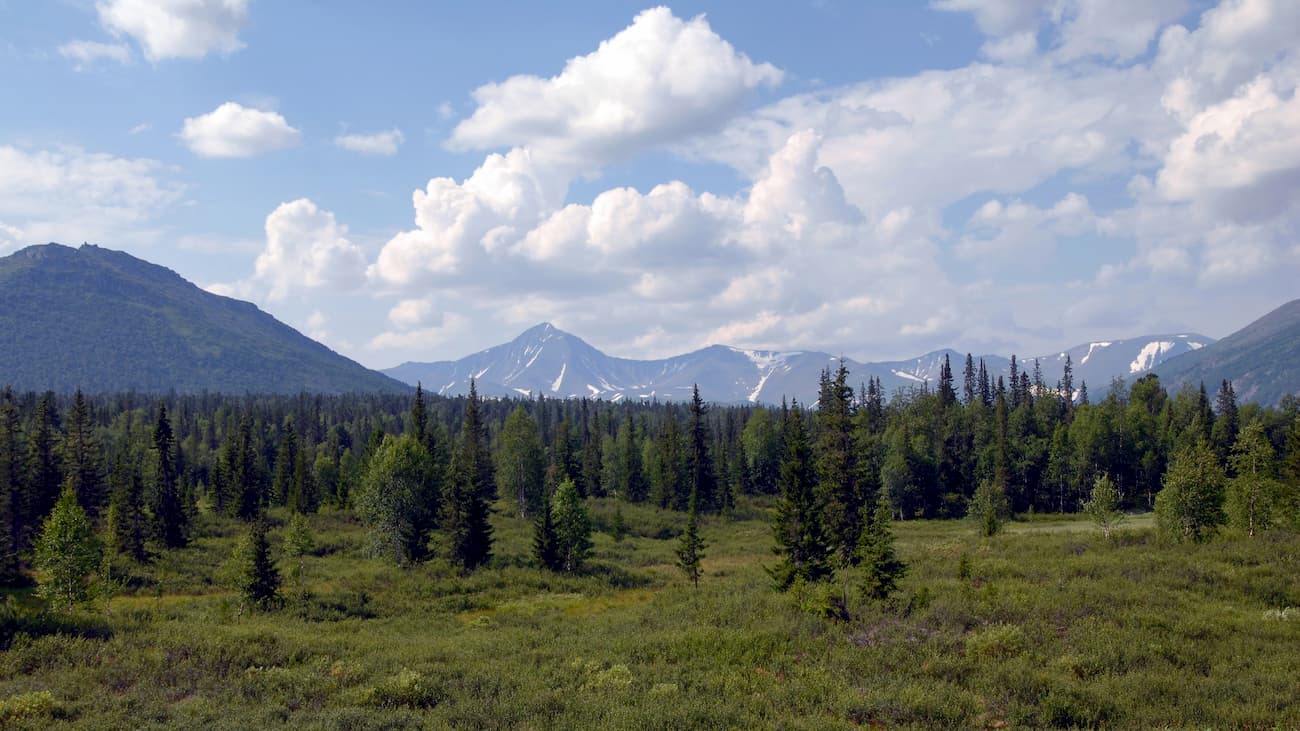
The animal world is typical for the Russian taiga zone. There are 369 species of vertebrates. Mammals are represented by 60 species (28 of them are commercial species). The most common and valuable of them are wild reindeer, elk, fox, sable, fox, squirrel, marten, ermine, Siberian weasel, polecat, mink, weasel, otter, hare and others. Wolverine and West Siberian river beaver are included in the Red Book of Russia.
There are 256 bird species in the region, including 206 sedentary and nesting species. Some rare bird species are listed in the Red Book. There are 42 species of fish in rivers and lakes. Of these, 19 species are commercial, among them are starlet sturgeon, lelema, muksun (whitefish), pelyad, chir, lake herring, wader, tugun, freshwater cod, pike, ide, roach, bream, fir, perch, ruff, golden and silver crucian carp, carp (carp is grown in the cooling ponds of the Surgutskaya and Nizhnevartovskaya hydroelectric plants). Sturgeon is listed in the Red Book. There is an abundance of mosquitoes and gnats in the area, the greatest activity of which is in the second half of summer.
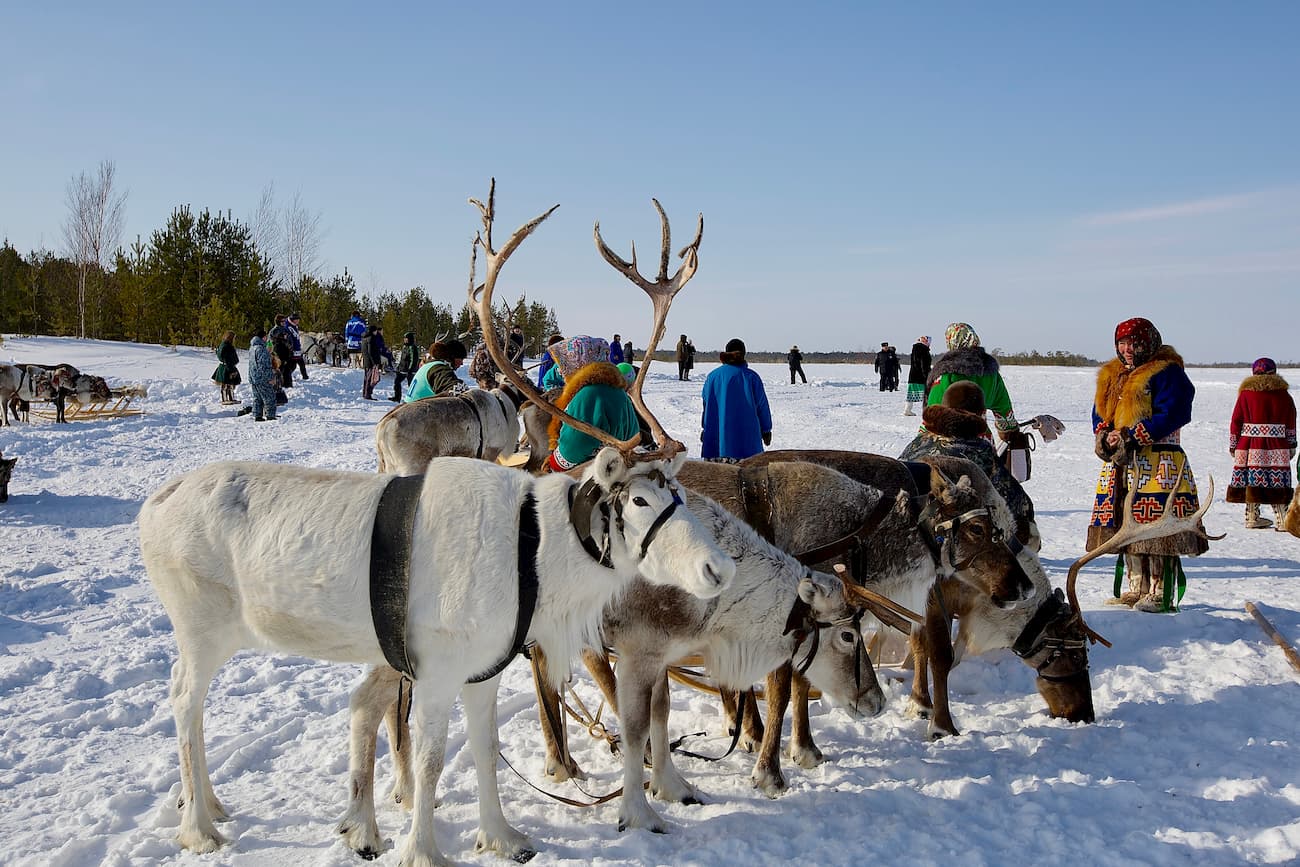
Yugra can boast of over 2 thousand large and small rivers, the total length of which is 172,000 km. The main rivers are the Ob (3,650 km), the Irtysh (3,580 km). These are some of the largest rivers in Russia. Other significant rivers include the tributaries of the Ob (the Vakh, Agan, Tromyogan, Bolshoy Yugan, Lyamin, Pim, Bolshoy Salym, Nazym, Severnaya Sosva, Kazym rivers), the tributary of the Irtysh (the Konda River) and the Sogom River. Ten rivers are over 500 km long. All the Yugra rivers with the exception of the rivers in the Ural part of the region are characterized by rather slow currents, gentle slopes, some surge wave phenomena, spring and summer floods. The Ob River basin extends over a distance of 700-200 km from the mouths of its tributaries. Such abundance of water facilitates the appearance of floodplain swamps and seasonal lakes.
The region's swamps are predominantly of the upper and transitional type. Those water basins occupy about a third of the region. About 290,000 lakes with the area of more than 1 ha are surrounded by swamps and forests. The largest lakes are Tursuntsky Tuman, Levushinsky Tuman, Vandemtor and Trmemtor. The deepest lakes are Kintus (48 m) and Syrky Sor (42 m). However, most of the lakes (about 90%) are modest and quite small and have no surface runoff.
The area is rich in resources of fresh, mineral and thermal underground waters, which are still insignificantly used.
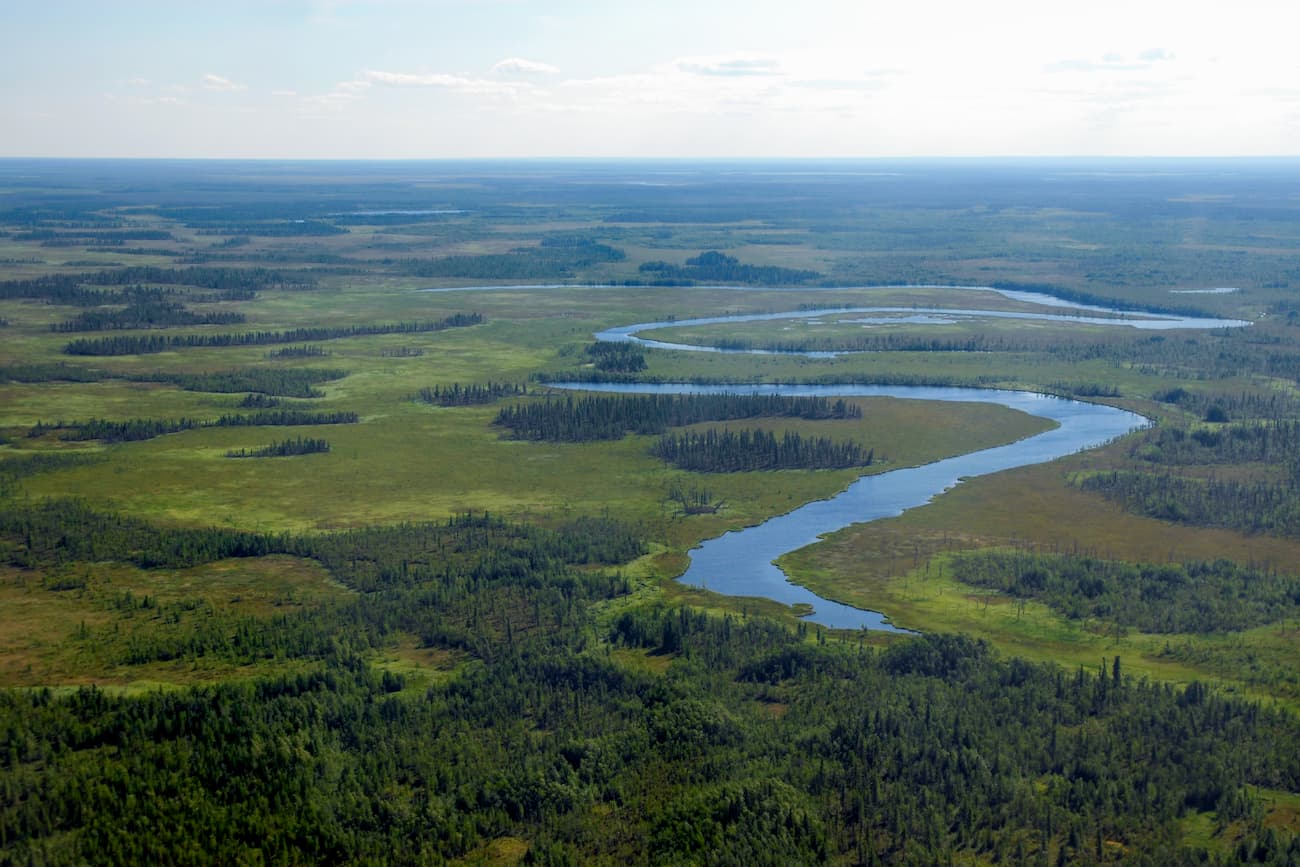
The climate is moderately continental. Winters are harsh, snowy and long, and summers are short and relatively warm. The territory is protected from the west by the Ural Mountains but its openness from the north has a significant impact on the climate formation because cold air masses from the Arctic freely penetrate the area. The flat character of the terrain with a large number of rivers, lakes and swamps also has its impact. Most of the precipitation falls during the warm seasons. But even with a small amount of precipitation, their evaporation is very low, which as a result contributes to the formation of the zone of excessive moisture throughout the Yugra. The snow cover is stable from late October to early May, its height varies from 50 to 80 cm. The region is characterized by a rapid change of weather conditions, especially in transitional seasons (autumn and spring), as well as during the day. Late spring and early autumn frosts are rather frequent and can happen even until mid-June. Average January temperatures range from -18ºC to -24ºC (0 F to -11 F) and can reach -60ºC to -62ºC (-76 F to -80 F) when the northern cold air masses break through. The average temperature in July, the warmest month of the year, ranges from +15ºC to +20ºC (+59 F to +68 F) and on very rare days can reach a maximum temperature of +36ºC (+97 F). The prevailing wind direction is north in summer and south in winter.
The weather in the mountains is quite changeable and cool even in summer. The best time to visit the region's mountains is between July and mid-August.
The Yugra of the Khanty-Mansi Autonomous Area has a huge natural resource potential. These are oil and gas deposits, forests, gold and iron ore deposits, as well as bauxites, copper, zinc, lead, niobium, tantalum, brown and hard coal deposits, rock crystal, quartz and piezo quartz, peat deposits, etc. The region has plenty of natural resources. In terms of natural gas reserves, the Yugra ranks second in the Russian Federation after the Yamalo-Nenets Autonomous District .
The industry is dominated by oil and gas production, power generation and processing industries, including woodworking except for pulp and paper production.
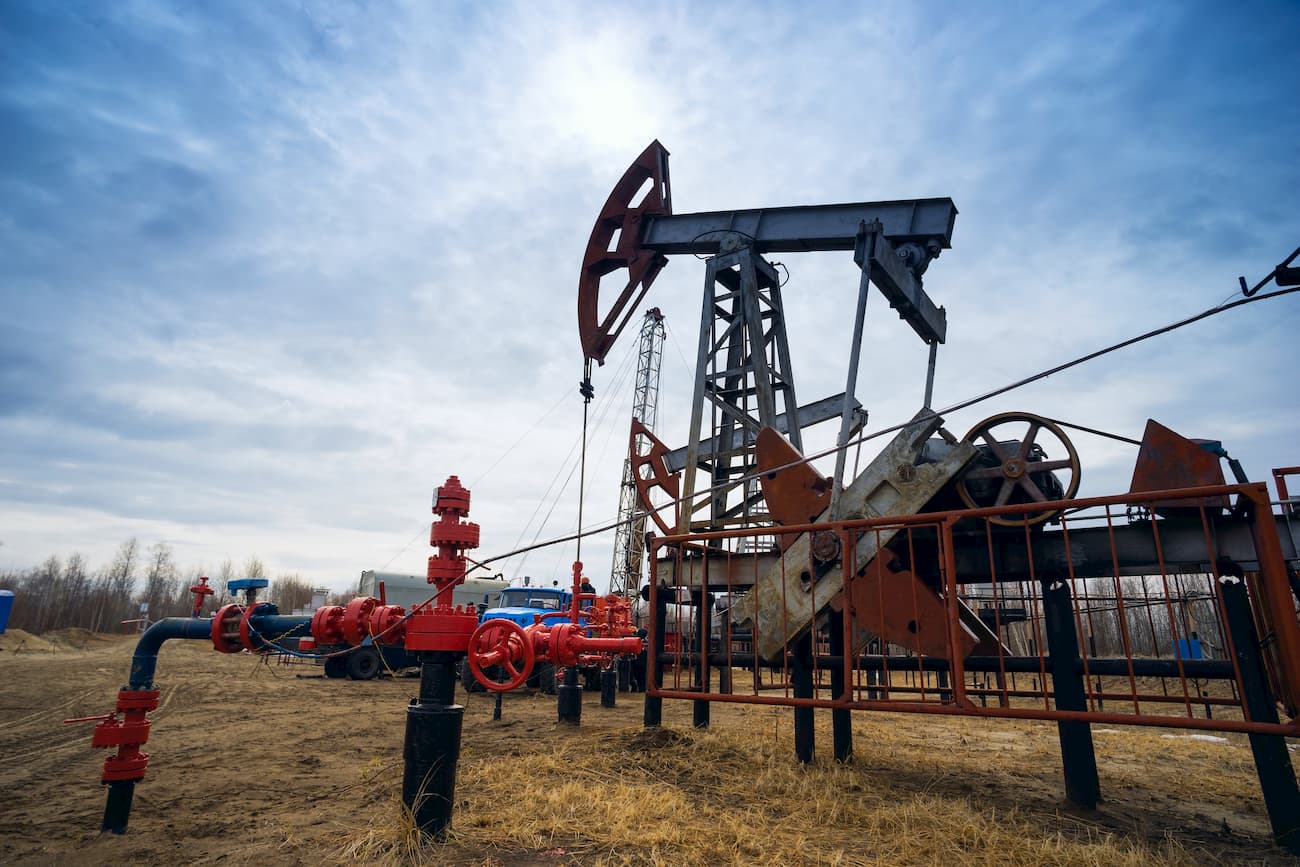
The Khanty-Mansi area has very developed tourism of all kinds. There is a modern infrastructure for cultural exploration as well as for active recreation.
Fans of sports and eco-friendly tourism will be able to conquer majestic mountains and raft down picturesque rivers, enjoy the beauty of nature in nature reserves and natural parks. The hills and mountains of this area open up endless opportunities for skiing and snowboarding.
The mountainous part of the Subpolar Urals located on the territory of the Khanty-Mansi Autonomous Area is very beautiful. The highest peaks of the Ural Mountains are situated here.
Being the highest point of the whole Urals, Mount Narodnaya (1,895 m), also known as Naroda and Poenurr and translated as People's Mountain is territorially situated in the Subpolar Urals, on the border of the Yugra Area and the Komi Republic . It is the highest point in European Russia outside the Caucasus. This leads to its large topographic prominence of 1,772 metres (5,814 ft).
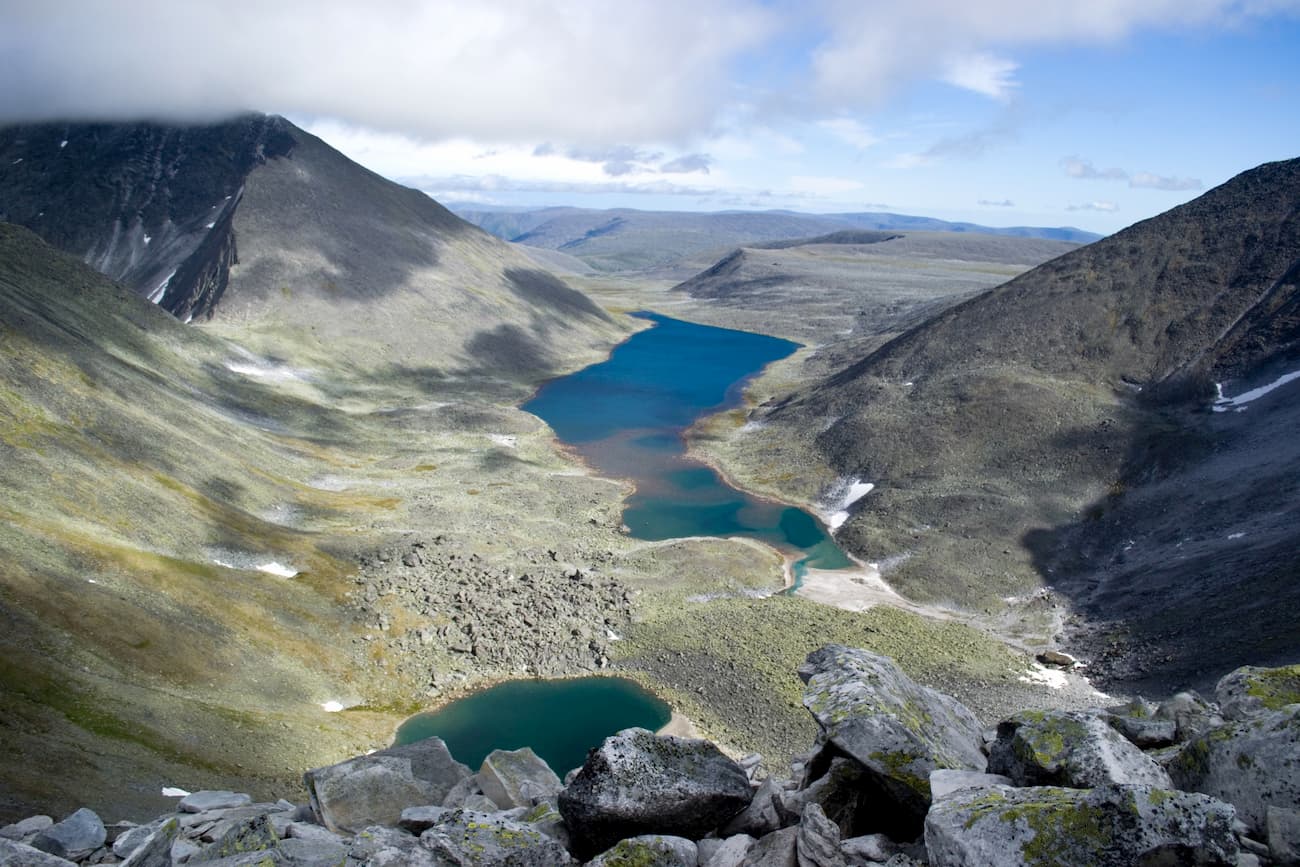
The top of the mountain is half a kilometre from the border towards Yugra. As for the name of the mountain, scientists could not come to a common opinion for a long time, so there are two versions. According to one version, in the Soviet years, an expedition of pioneers gave the mountain a name in honour of the Soviet people - Narodnaya (the stress is on the second syllable). According to the other version, even before the arrival of the first Soviet tourists, the peak was named after the River Naroda (the stress is on the first syllable) flowing at the foot of the mountain. The Nenets peoples called the River Naroda Naro, which means a thicket or a dense forest, and the Mansi peoples called it Poengurr or Poen-urr, which translates as the top, or head. The maps used to refer to it as Mount Naroda or Mount Naroda-Iz. Nowadays, it appears everywhere as Narodnaya.
In the 1980s, someone set a bust of Lenin on the top of the mountain. Its remains can be found there to this day. There is one more symbolic relic there – some Orthodox believers erected a worship cross on top of Mount Narodnaya after a Procession of the Cross.
The slopes of the mountain are steeper in the north-east and south-west and there are many steep rocks on them. The south-eastern and northern parts of the mountain are more gentle but they are also covered with scree. Be vigilant and careful when climbing! On the slopes of the mountain, there are many not only boulders but also caverns filled with clear water as well as ice. There are glaciers and snowfields. From the north-eastern part of the mountain, you can observe Lake Blue near which tourists and travellers like to make bivouacs.
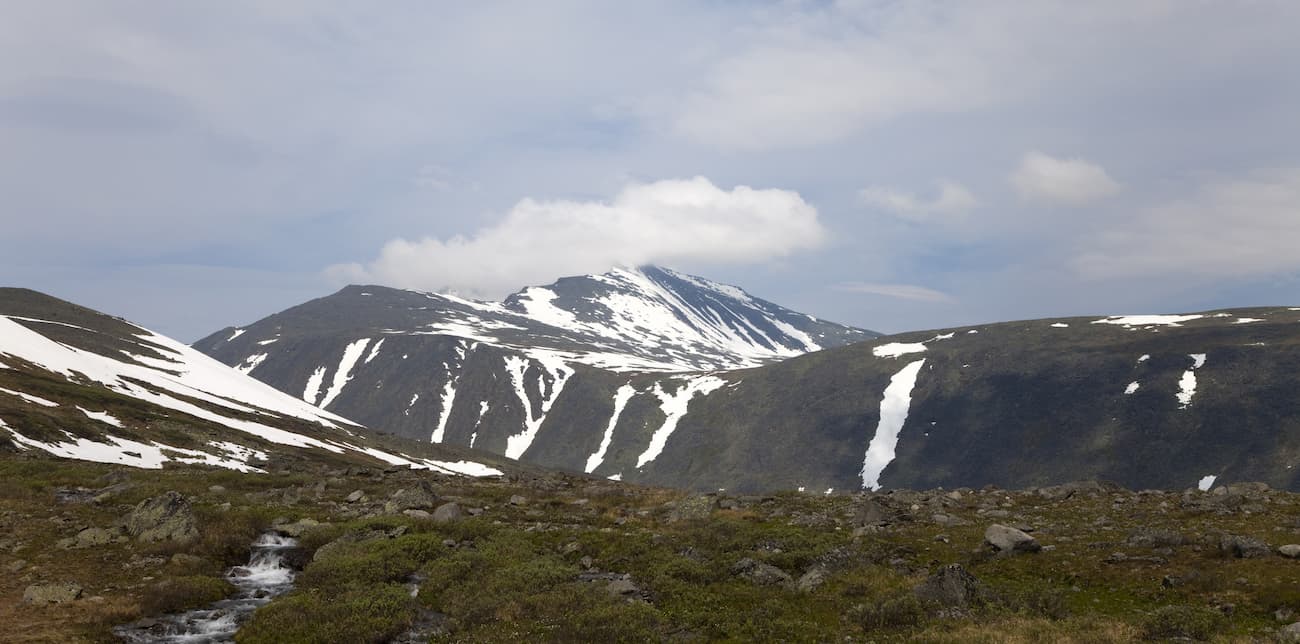
Mesmerizing with its beauty and inaccessibility, it attracts many tourists and fans of active recreation. This majestic mountain is quite remote from the settlements, so getting to it is not an easy task. The mountain is located in the Yugyd Va National Park , so it is necessary to register in advance and get a visit permit from the park administration. How to get to the park administration and get a permit, read the article on the Yugyd Va National Park .
Mountain Zaschita (1,808 m) is the second-highest peak in the Ural Mountains, after Mount Narodnaya . Mysteriously, the name of the mountain, which roughly translates as Defense or Protection Mount, does not correlate in any way with the Mansi names of the nearby mountains and rivers. The origin of the name is unknown. There are some speculations but we will consider just one of them. On the map of the Northern Urals which was made by the Hungarian researcher Reguli the closest peak to Mount Narodnaya was called gnetying olu. Its location coincides with that of the present-day Mount Zaschita . The name gnetying olu in the Mansi can be deciphered as a mountain on which there is some help from ice. The mountain is believed to protect deer grazing on glaciers from mosquitoes. So, early topographers called the mountain more briefly – Mount Defense. Indeed, the slopes of this mountain are covered with a lot of snow and glaciers (the Yugra, Naroda, Kosyu, Hobyu glaciers and others). And it is here that the Mansi shepherds bring their deer which can rest on glaciers and snow. Summarizing all the above, we can say that Zaschita Mount is to some extent protection for deer from mosquitoes. The very name Zaschita appeared on maps with the beginning of hiking tours in the Subpolar Urals.
Mount Neroyka (1,645 m) is 100 km from Neroyka village, the closest tourist base to this peak. In the 1950s, people who were engaged in quartz mining near the mountain worked and lived in this base. Later, a gravel road was built from the village of Saranpaul to the mountain for large-scale development of the quartz deposit. In recent years, the road has not been much used and is practically not cleaned from snow in winter. There has been a plant built 20 km down from the mountain for primary processing of quartz with the use of nanotechnologies. There is an annual big camping event near the mountain. It is organized by the Tourism Department of the Khanty-Mansi Autonomous Area. You can have a 1-hour helicopter ride to the mountain from the village of Saranpaul. Should you wish to fly from the city of Khanty-Mansiysk , be prepared to fly over the taiga for 2.5-3 hours.
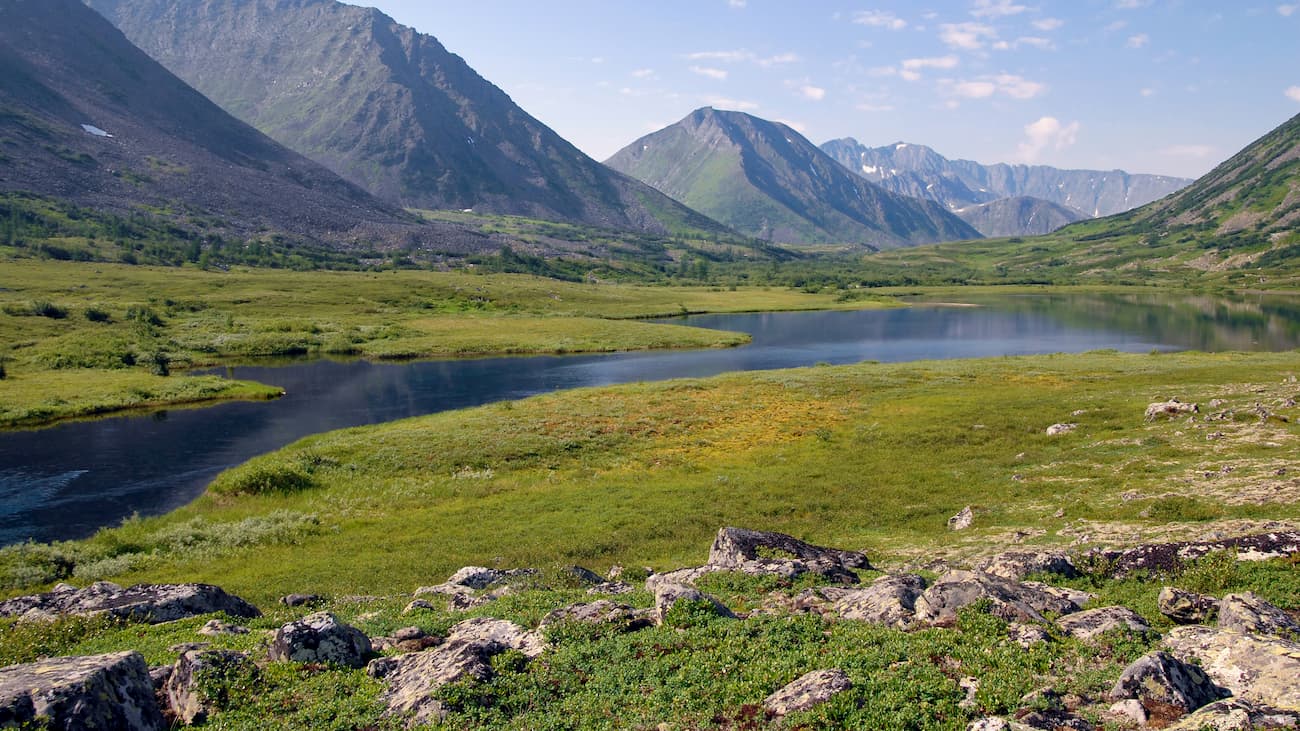
Quite inquisitive tourists happened to discover, by a lucky chance, a Pyramid similar to that of Cheops but four times bigger. It is located on the territory of the Narodo-Ityinsky Ridge. The closest to the pyramid is the village of Saranpaul. The sizes of the found pyramid are as follows: the height is 774 m, in comparison to the Egyptian pyramid which is 147 m; the length of a lateral edge is 230 m whereas the Egyptian pyramid is 1 km. The pyramid is located precisely according to the cardinal directions, there is not a single degree deviation at that. The origin of the pyramid is unknown, scientists are still making assumptions. No traces of human activity were found near the pyramid. The only way to get here at this time is by helicopter.
Samarovskaya Mountain is another wonder that is baffling many people. It is dividing the city of Khanty-Mansiysk into northern and southern parts. Few now living residents know that in the old days the highest part of the modern city used to bear a plural name of the Samarovsky Mountains among which there were Mount Palenina, Komissarskaya, Miroslavskaya, Filinova, and Romanova. Originally, there was a village called Samarovo amidst these mountains. Until now, many issues bewilder both residents and scientists. How could a mountain form in the middle of the West Siberian Plain? What is inside it? Won't the weight of the buildings erected on the top of the mountain affect its height? The uniqueness of Samarovskaya Mountain is that it consists of numerous large stones, boulders, rocks that are absolutely foreign to this area. Scientists have not yet come to a consensus on the mountain’s origin.
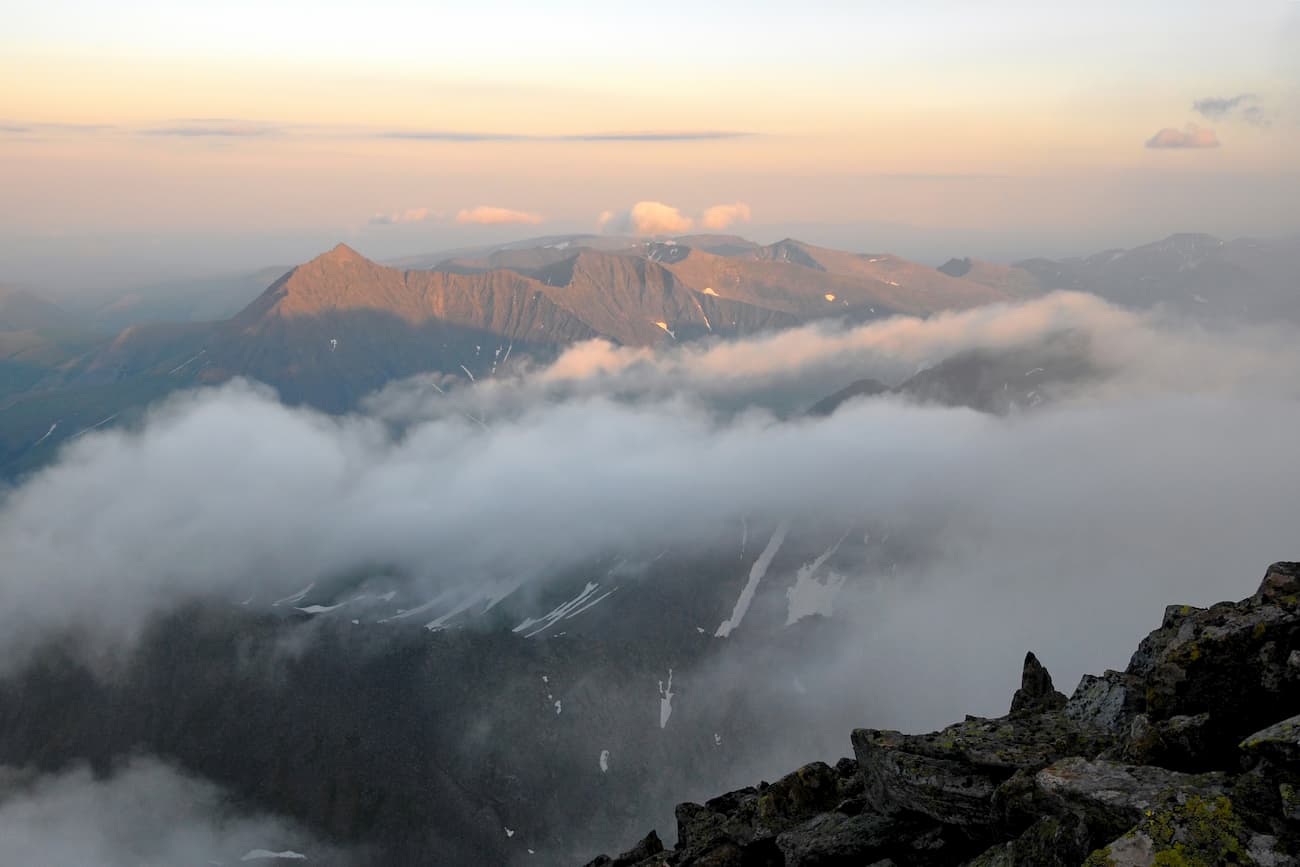
The Yugra is very famous for its ski resorts, the main of which are:
- The Cedar Ravine ski resort (Surgut city, Naberezhny Ave. 39/1)
- Three Mountains (Trekhgorie) ski resort (30 km from Nizhnevartovsk, Ermakovsky settlement)
- Stone Cape (Kamenniy Mys) ski resort (near the city of Surgut)
- Pine Urman ski resort ( Khanty-Mansiysk , Sportivnaya Str., 24)
The far-away lands of the Yugra are the blessed sanctuaries for many animals as the area is rather hostile to a human There are reserves, natural parks, wildlife sanctuaries here that aim to protect the national treasures of the lands. Having visited these regions once, you would crave for coming back again and again to feel that unique sense of unity with nature, to forget about the urban fuss and and hustles whatsoever. The harsh but beautiful nature of this extraordinary area leaves an indelible trace in the soul of every person.
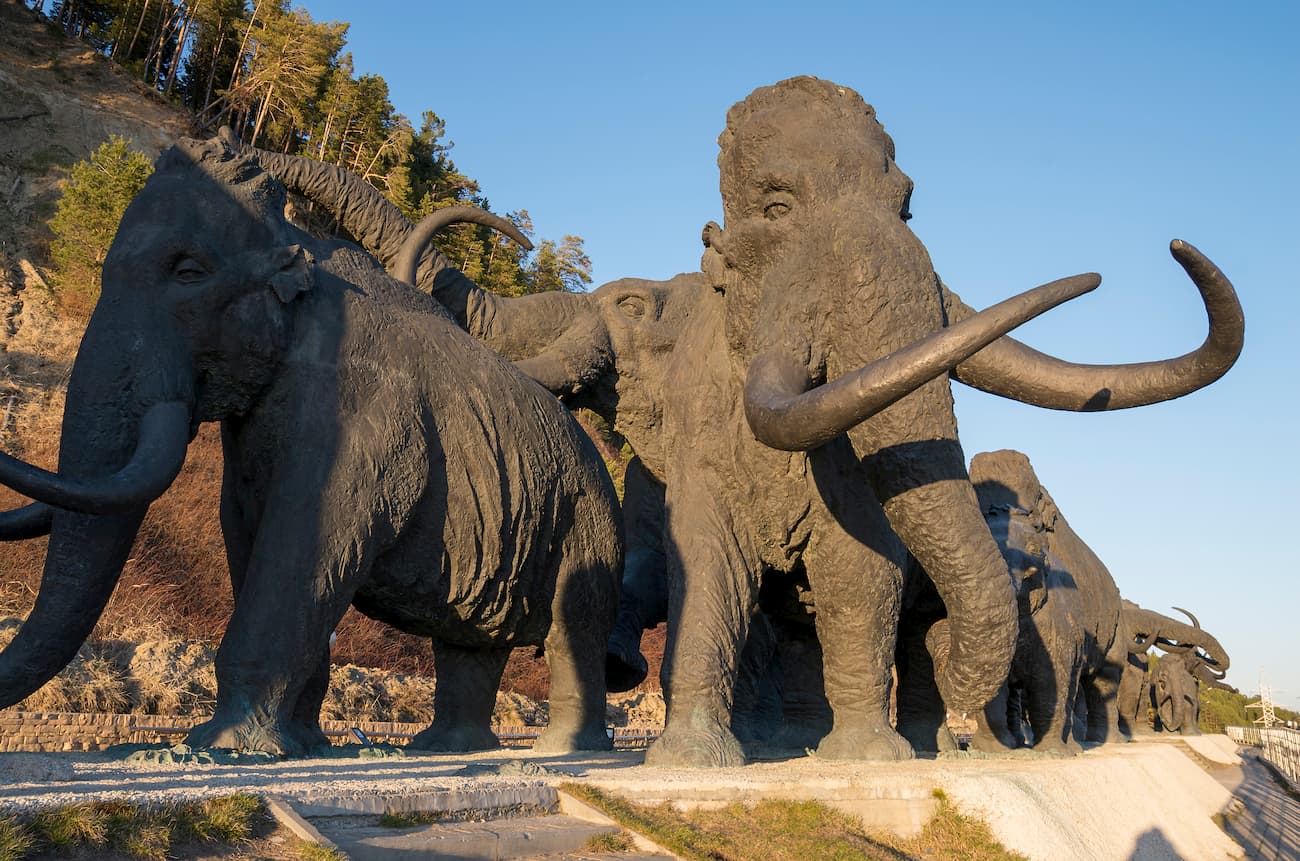
On the territory of the district there are 25 specially protected natural areas, the most famous of them are:
- The reserves are two: the Malaya Sosva Reserve and the Yugan Reserve, the latter was established in 1982 as the largest reserve of taiga landscapes. The purpose of the reserves was to study unobtrusively and carefully preserve the endemic flora and fauna without disturbing natural processes. Hunting and economic activities are prohibited here, which is important for the preservation of natural ecosystems.
- The natural parks are the Samarovsky Chugas Nature Park, the Siberian Sloping Hills (Uvaly), the Numto (also called Lake Numto), and the Kondinskie Lakes.
These reserves and natural parks offer tourists their own excursion programs to make visiting their territory much more enjoyable and educational.
The Samarovsky Chugas Nature Park is located in the center of Khanty-Mansiysk , on a small hill between the Ob and Irtysh rivers.
The territory of the Siberian Sloping Hills (Uvaly) natural park is 350 km away from the city of Khanty-Mansiysk . You can get there by helicopter or by plane. The office of the park is located at 7a Pionerskaya Street, Nizhnevartovsk.
The Kondinskie Lakes Natural Park is located 380 km from Khanty-Mansiysk . Half of the park is covered with swamps, but there is also a recreational area. There you can rest, swim, do some amateur fishing, picking berries (cowberries, cranberries) and mushrooms is permitted. There is only one independent walking route here, it runs for 3 km in the deep forest. It is a cool place for kids since the park is equipped with sports grounds, a pool and a small zoo where the kids can interact with brown bear cubs. What else, try the TaiPark, it is a rope course running at the height of 2.5 meters, having 15 stages, the full length is 125 meters. There is an opportunity to order water walking tours in the town of Sovetsky, which can be reached by train from Khanty-Mansiysk .
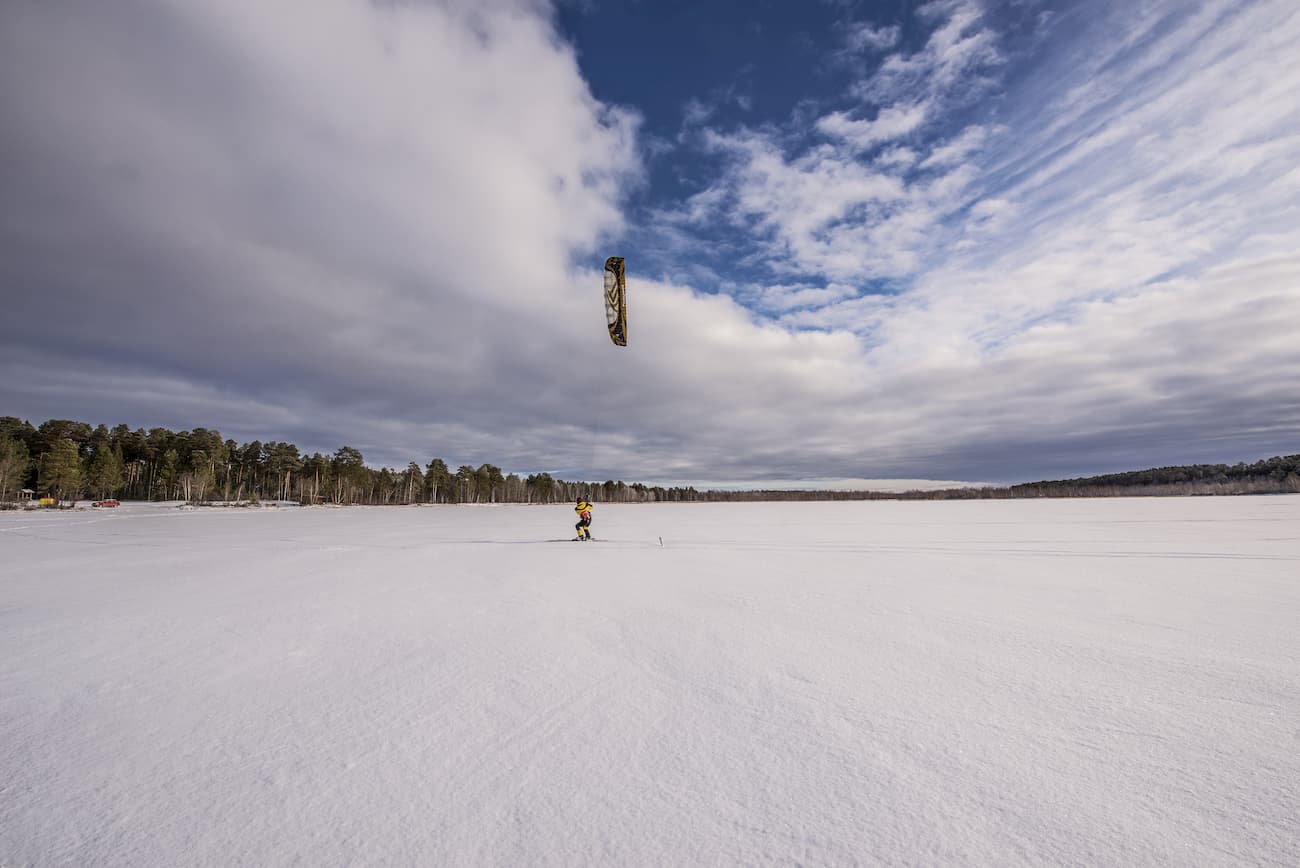
The Numto Nature Park is located almost in the center of the West Siberian Plain, in the Beloyarsk district of the Khanty-Mansi Autonomous Area, 300 km from the city of Surgut and 200 km from the town of Beloyarsk. It is located on the border of Yugra and Yamalo-Nenets Autonomous Area. The administration of the park is located at 2, Beloyarsky micro-district, 4a. The territory of the natural park is a treasure trove of archaeological and ethnocultural monuments. As of today, there have been discovered 20 architectural monuments, including fortified and not fortified settlements, places of worship abandoned by the peoples who lived here from the Stone Age to almost the present day. Researchers have also found 65 monuments of ethnic value, the main of which are worship objects, sacred places and cemeteries.
The Malaya Sosva Reserve includes several subordinated territories and sanctuaries, including Lake Ranghe-Tour. The reserve offers a 4-km walking guided route that gets the visitors introduced to the typical features and characteristics of flora and fauna of the region. The route is called Bear Trail and you can spot bears there (don’t come close though, we’ve already written how to behave if you meet a bear in the wild). Also, you will see the River Malaya Sosva, some marshes, ancient cultural monuments and other nice sights. Permission to visit the reserve can be obtained from the administration of the reserve at Lenina Str. 46, town Sovetskiy.
As to the Yugan Nature Reserve , it is inaccessible to common hikers who are afraid of flying since there are no roads to it. The only way to get there is taking a helicopter ride. You also must obtain a permit in the administration of the reserve, go accompanied by employees of the reserve, and only on special transport of the reserve (motorboat, snowmobile). The central manor of the Reserve and the administration are located in the village of Ugut. To get to this village, you should first go to the town of Surgut, then go to the town of Pyt-Yakh, and from it there is a road to the village of Ugut. It is about 100 km from Ugut to the southern border of the reserve i, and another 25 km to the nearest cordon. The administration works from Monday to Friday. You can request a permit via mail at [email protected] , order a guided tour at [email protected]
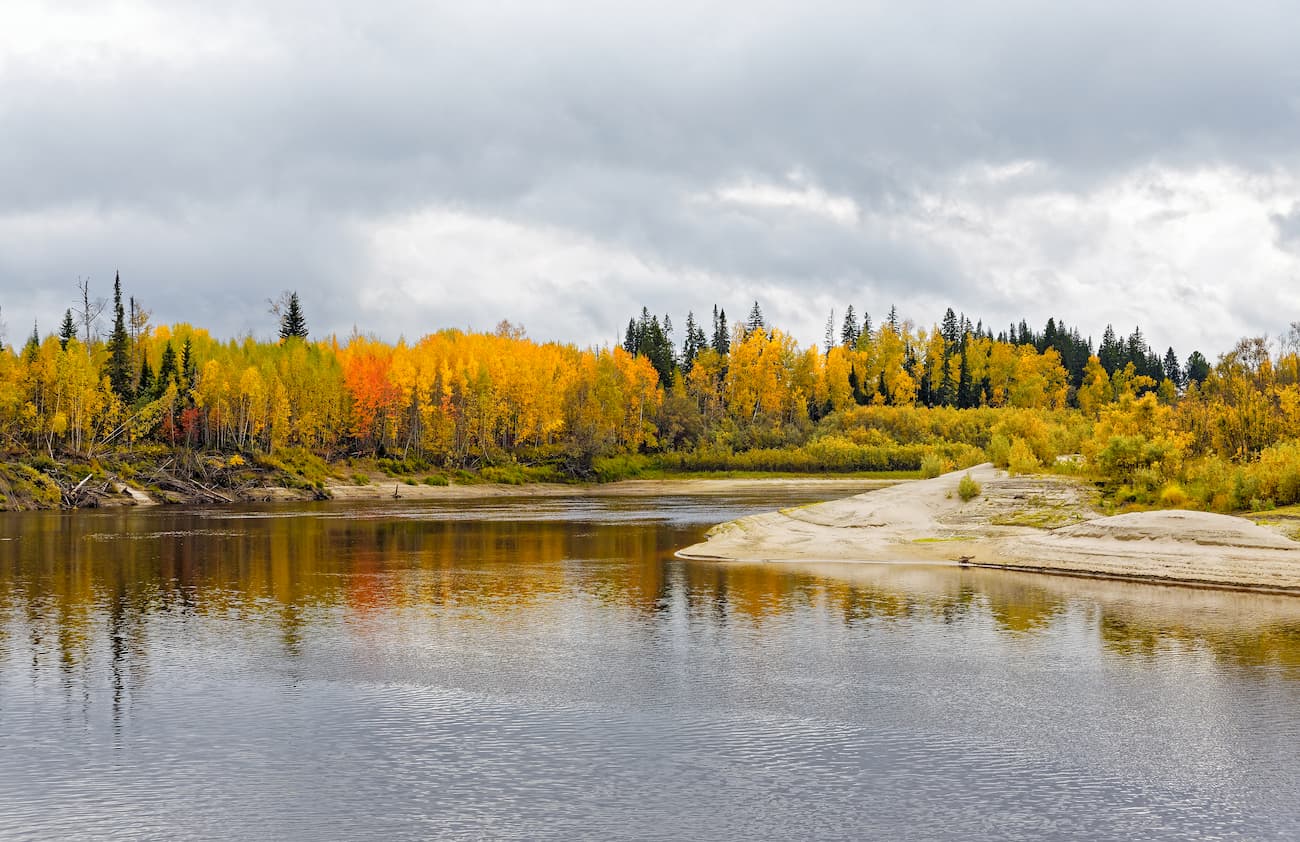
The Yugra lands are heaven for water sports aficionados. They can have some awesome fishing or go rafting along such rivers as: the river Naroda, the Deep Sabun, etc.
The Naroda River is 140 km long. It is the left tributary of the Manya River located in the Ob River basin. The river has its origin on the south-western slope of Mount Narodnaya . It is a mountain-taiga river with rapids, swifts, numerous rolls, which attracts interest among water tourists. However, it is usually not rafted very often.
The Deep Sabun River flows through the territory of the Siberian Sloping Hills Nature Park. The park has developed multi-day water routes. It is possible to raft along the river in summer and to go skiing along it in winter.
The Kondinskie Lakes are a system of lakes along the left bank of the Konda River. The largest lake is the Arantur, with pine forests on the northern side and sandy beaches well equipped for a nice relaxing me-time. The water heats up well in summer. The small river Okunevaya and the river Maly Akh flow into the lake. The Maly Akh comes in on the west side and connects lake Arantur with Lake Pon-Tour. This lake is the richest in fish, and there is also a parking lot for fishermen here. The streams connect Pon-Tour with small lakes Krugloe and Lopukhovoye. When you look at Lopukhovoe lake, you feel as if you have found yourself in a fabulous place: more than half of its surface is covered with white lilies, as well as yellow flowers of the water-beans. Then the river Big Akh, which flows into the river Konda, connects all the lakes into a single system. Along the river there are many archeological monuments such as forts and settlements which have paths to them. The southernmost lake of the park is Ranghe-Tour.
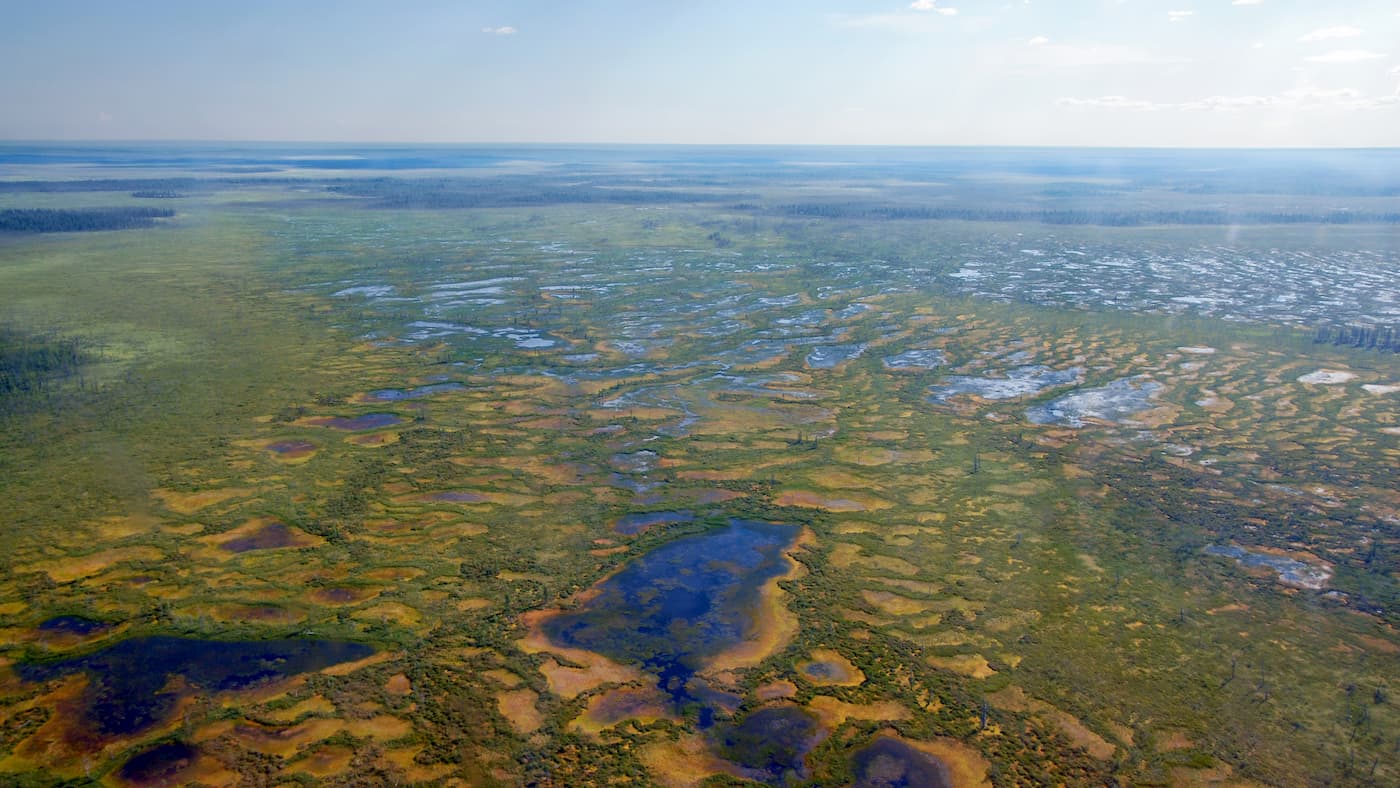
Yugra is not the easiest destination and not the most accessible, but the effort is well worth it. You should first get to the capital of Khanty-Mansiysk Autonomous Area – the city of Khanty-Mansiysk either by air or by train.
Khanty-Mansiysk is based on the premises of the former village Samarovo founded in 1582. It used to be the territory of the Khanty people and a pit stop for coachmen who rode their wagons across the country. The village was founded by Russian Count Samara, thus the name Samarovo. The modern city actually began to develop in 1930 because amidst the Siberian taiga there finally started to appear stone houses on the high bank of the Irtysh River. In 1940, the village was renamed into Khanty-Mansiysk by the name of the peoples living on this territory – the Khanty and the Mansi, and in 1950 it received the status of a town.
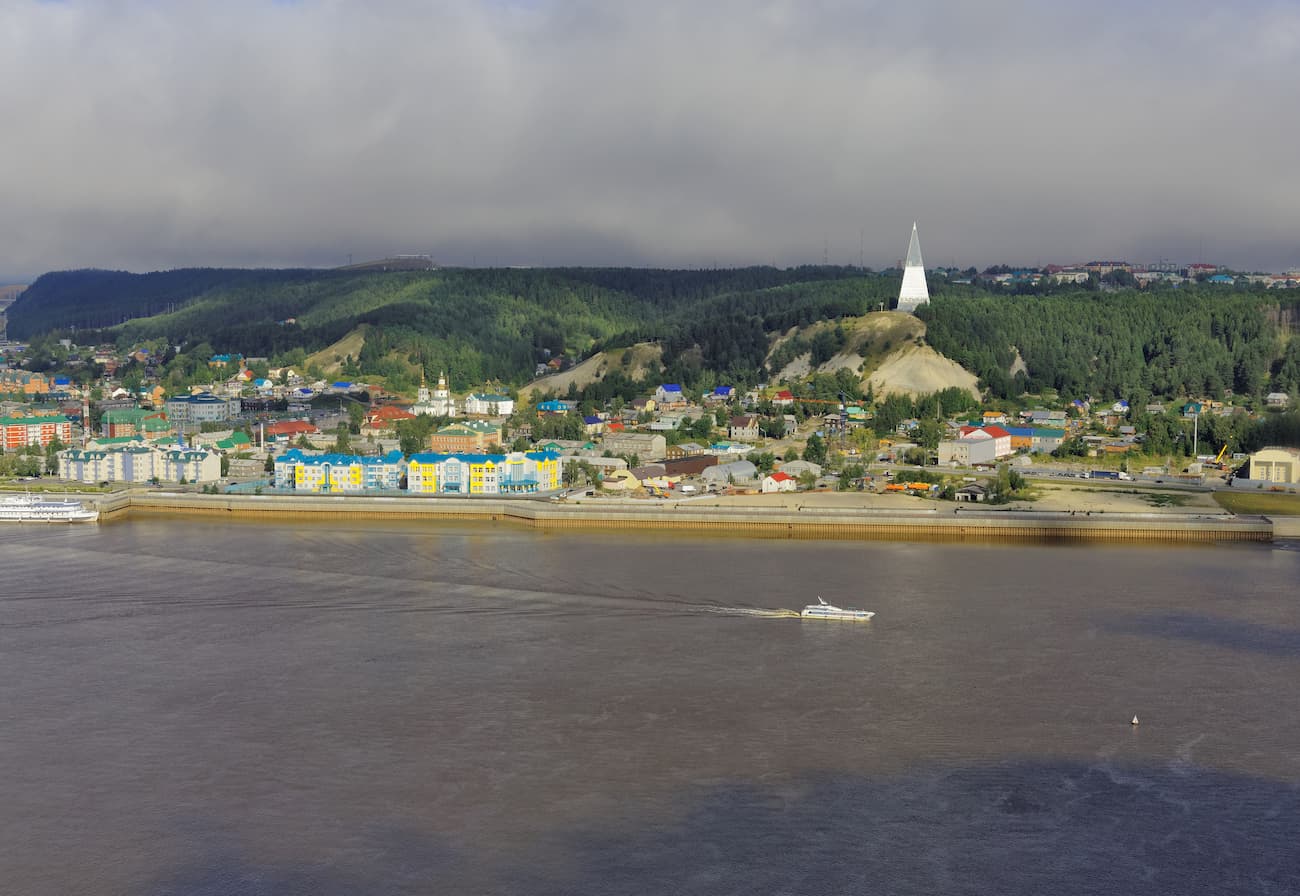
The city has several attractions. Mount Samarovskaya is probably the biggest natural and scientific wonder. It divides the city in two parts and causes many concerns for urban developers who always wonder whether this mountain can move making the buildings slide or even sink in.
Another beauty is the century-old cedar grove that is within the city limits. The grove is a part of the natural park Samarovsky Chugas. The word chugas in the language of the Khanty means a lonely hill in the low river floodplain.

The park is one of the main attractions of the city, it hosts an open-air ethnographic museum called the Torum Maa, a cultural and tourist complex called Archaeopark, a biathlon center. Kids and adults, nature lovers and fans of culture love this place dearly.
A memorial sign to Yugra's discoverers is installed on top of the Samarovsky Chugas. It is a tall stele pyramid divided into three portions. On the lower level, there is a restaurant, on the second level is a small museum, and on the third level there is an observation deck, 40 m above the ground, with a magnificent view of the Irtysh River and the river port. The pyramid is decorated by the bas-relief depicting the discoverers of the region, from the 16th-century Count Samara to the geologists of the 20th century.
Another trademark of Khanty-Mansiysk is the State Museum of Nature and Man. The museum hosts a gallery and a workshop of a famous artist G. Rayshev.
The city has a lot of small monuments generously spread around the city. There is the Khanty family resting on a camp, this monument is near the airport building. You can take a pic at the Golden Tambourine located at the intersection of Gagarin Street and Mira Street. Connoisseurs of culture should also visit the Sun – the Theatre of Ob-Ugrian Peoples, it is the world's first professional theatre of Khanty and Mansi peoples. And if you are travelling with kids, the Khanty-Mansiysk Puppet Theatre is a must-visit. In the period from May to October, you can take a boat ride to the confluence of two rivers – the Ob and the Irtysh. Yugra Service Co. operates such cruises, you can find more information locally at their address Tobolsk Trakt street 4, Khanty-Mansiysk .
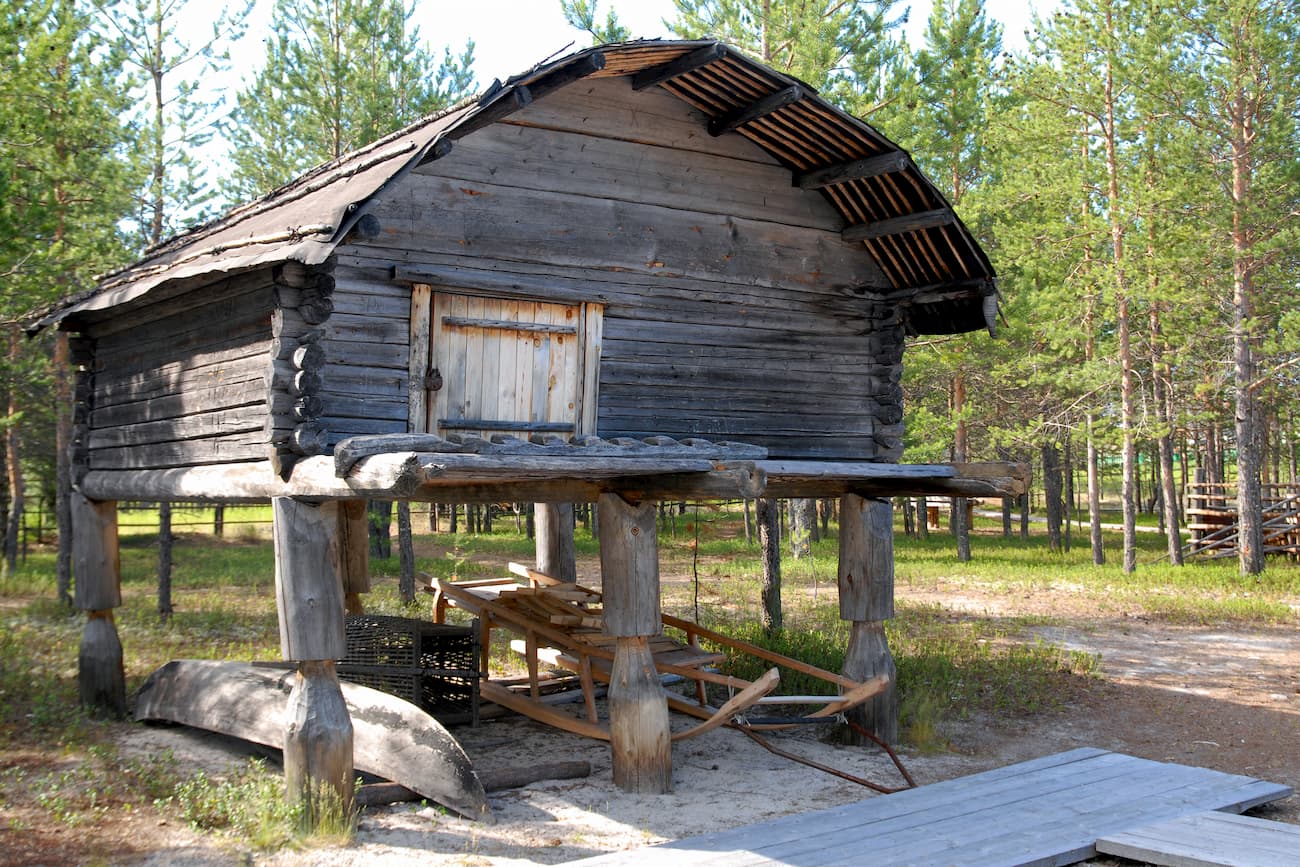
Explore Khanty-Mansiysk Autonomous Okrug – Ugra with the PeakVisor 3D Map and identify its summits .

PeakVisor Hiking Maps
Be a superhero of outdoor navigation with state-of-the-art 3D maps and mountain identification in the palm of your hand!
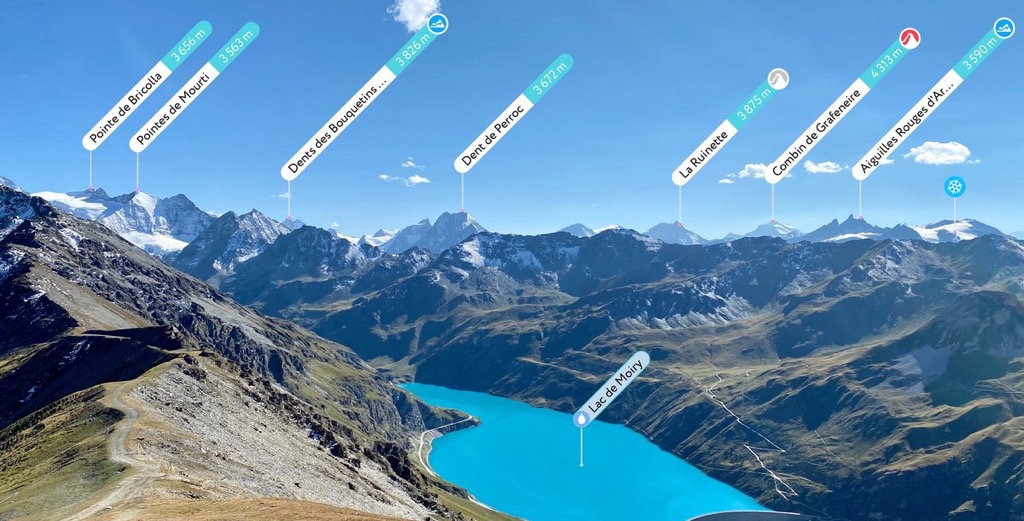
- Route planner

Khanty-Mansiysk Autonomous Okrug – Ugra
The best running trails in Khanty-Mansiysk Autonomous Okrug – Ugra
Running in Khanty-Mansiysk Autonomous Okrug – Ugra is one of the best ways to explore more of this region. To help you discover the most beautiful places to run, we’ve reviewed our full collection of routes in Khanty-Mansiysk Autonomous Okrug – Ugra—and are proud to present the best running trails. Click on any of the routes for more details and browse real tips and photos uploaded by other runners.
Plan. Save. Navigate. Your best adventures await.
Start today with a free komoot account.
Popular around Khanty-Mansiysk Autonomous Okrug – Ugra

Find the perfect Tour
Didn’t find what you were looking for? Check out more Running Trails & Routes throughout Khanty-Mansiysk Autonomous Okrug – Ugra below and find the perfect Tour in your destination.
- Ural Mountains
Explore more of Russia : Browse the best Running Trails & Routes in other regions.
- Saint Petersburg
- Greater Caucasus
- Krasnodar Krai
- Stavropol Krai
- Karachay-Cherkessia
- Leningrad oblast
- Kaliningrad
- Nizhny Novgorod
- Chelyabinsk
- Bashkortostan
- Kabardino-Balkaria
- Republic of Karelia
- Novosibirsk
- Primorsky Krai
- Republic of Mordovia
Surgut map, satellite – loading . . .
Khanty-mansiyskiy avtonomnyy okrug - yugra, 🌍 surgut map.
Name: Surgut
Latitude: 61°15'00"N
Longitude: 73°25'00"E
City: Surgut
Region: Surgut
Region: Khanty-Mansiysk Autonomous Okrug – Ugra
Region: Ural Federal District
Country: Russia

IMAGES
COMMENTS
The alluring emerald green waters of Vembanad Lake polka-dotted by green lands, Kumarakom in Kottayam is a paradise indeed. Enticing tourists from far and wide with its picturesque beauty, Kumarakom was declared as a Special Tourism Zone by the Government of Kerala in 2005 and is currently a major Responsible Tourism destination of the State.
Kumarakom Responsible Tourism initiative created many working models. All these models were actually developed by the idea of the RT Destination Coordinator along with the support of Panchayat and DLRTC. The models were Price fixing Committee, Quality Assurance Committee, Ranking of Hotels, RT Partners Forum etc.
In 2007, the Department of Tourism of the Government of Kerala established the Kumarakom Responsible Tourism project to foster sustainable tourism development in the state. Kumarakom was selected as a pilot destination for the initiative, as one of Kerala's most globally renowned destinations. The project envisages that each stakeholder in ...
The official inauguration of Responsible Tourism in Kumarakom happened in March 2008 and it was the Kumarakom Gram Panchayat that initiated the implementation of Responsible Tourism at Kumarakom. The advantage of experiencing village life with the locals is the economic, social and environmental sustainability with minimum negative impact. ...
Responsible Tourism (RT) activities focus mainly on three areas - the economic, social and environmental aspects of the destination. The RT authorities of Kumarakom have planned and implemented various projects with these focus areas in mind. It was in March, 2008, that the Responsible Tourism project was officially inaugurated in Kumarakom.
Located in central Kerala right on the backwaters, Kumarakom is sandwiched between Alleppey and Kottayam. Ten years ago, Kumarakom was designated as a focus area for responsible tourism by the Kerala tourism board - meaning that the area had been identified as a tourism hotspot, where efforts towards more responsible tourism were needed and ...
The first Responsible Tourism Mission activities were held in Kumarakom. They were so successful that it attracted global attention. Aymanam was chosen as Ke...
1. Responsible T ourism and Sustainability: The Case of. Kumarakom in Kerala, India. Authors: Dr Angelique Chettiparamb, Senior Lecturer, School of Real Estate and Planning, University of Reading ...
Village kids, though shy, were fascinated by their visitors. If you are interested to experience sustainable tourism and support the local community, you can get in touch with the following offices: Responsible Tourism Travel Desk Kumarakom. Phone: +91 481 2523097. E-mail: [email protected].
Responsible tourism in Kumarakom promotes cultural exchange between tourists and locals. By providing opportunities for interaction with tourists, the natives gain exposure to new ideas, cultures and perspectives. In return, tourists get a chance to learn about the village's traditions, customs and way of life, fostering mutual respect and ...
Here is a short film on the Responsible Tourism initiatives at Kumarakom. Kumarakom was honored by Ministry of Tourism, Govt. of India for the best Responsib...
PDF | On Apr 28, 2019, Paul V Mathew published RESPONSIBLE TOURISM AT KUMARAKOM- An Effective Mechanism to Achieve Millennium Development Goals (MDG) | Find, read and cite all the research you ...
The State Government has selected Kumarakom, Wayanad, Kovalam and Thekkady as pilot destinations to implement the Responsible Tourism initiative. Kumarakom has come up with many innovative projects and initiatives which ensure the active participation of local bodies, industries, communities and Kudumbasree units (self-help groups of women) to meet all the goals envisaged in Responsible Tourism.
re sponsible tourism as a best practices for sustainable ecotourism to for the present and as well as. future. Keywords: Responsible tourism, Sustainable Ecotourism, Tourism development, Kumarakom ...
This document discusses responsible tourism in Kerala with a case study of Kumarakom Panchayath. It provides an introduction to responsible tourism and sustainable tourism, highlighting their importance. Tourism is a major industry worldwide but can negatively impact local environments and communities if not properly managed. The case study examines responsible tourism units in Kumarakom ...
One of Kumarakom's flagship initiatives under Kerala's award-winning Responsible Tourism (RT) Mission, this humble joint has been offering tourists a taste of local cuisine while providing a steady source of income to the women carrying its reins. Vijayamma Sarlappan, Samruddhi group's president, shares how it all started.
Kumarakom Tourism. With emerald green waters flanked by lush vegetation, Kumarakom is an enchanting backwater destination situated 16km away from Kottayam in Kerala. Lying on the banks of Vembanad Lake, Kerala's largest lake, Kumarakom is a cluster of small human-made islands reclaimed from the lake. This picturesque village beckons travelers ...
Inauguration of the Global Responsible Tourism Summit in Kumarakom, Kerala. Kerala will go for timely alterations in its Responsible Tourism (RT) policy to make the activities more people-centric so as to further strengthen the State's travel and tourism industry, said its tourism minister PA Mohamed Riyas. Expert suggestions to accomplish this aim will be central to the first-ever Global ...
🌍 online Surgut map: share place in map center, find your location, routes building, ruler for distance measurements. Address search. Restaurants, hotels, bars, coffee, banks, gas stations, parking lots, groceries, post offices, hospitals and pharmacies, markets, shops, cafes, taxi and bus stations, landmarks and other places on the interactive online map of Surgut(Khanty-Mansiyskiy ...
The tour package 'Village life experience at Kumarakom' is a half-day tour package, to give the tourist an authentic experience. It is also a fine example of an itinerary linking the community-based tourism products and services, as envisaged by the Responsible Tourism programme. A lot of natives take active part in this package which costs ...
The Khanty-Mansiysk Autonomous Area (KhMAO) was established in 1930. Its name comes from two main northern indigenous peoples - the Khanty and the Mansi. From 1944 it was legally part of the Tyumen Region, but in 1993 the Area received autonomy and became a full-fledged territorial entity of the Russian Federation.
Running in Khanty-Mansiysk Autonomous Okrug - Ugra is one of the best ways to explore more of this region. To help you discover the most beautiful places to run, we've reviewed our full collection of routes in Khanty-Mansiysk Autonomous Okrug - Ugra—and are proud to present the best running trails. Click on any of the routes for more details and browse real tips and photos uploaded by ...
All streets and buildings location of Surgut on the live satellite photo map. Europe online Surgut map. 🌍 map of Surgut (Russia / Khanty-Mansiyskiy Avtonomnyy Okrug - Yugra), satellite view. Real streets and buildings location with labels, ruler, places sharing, search, locating, routing and weather forecast.